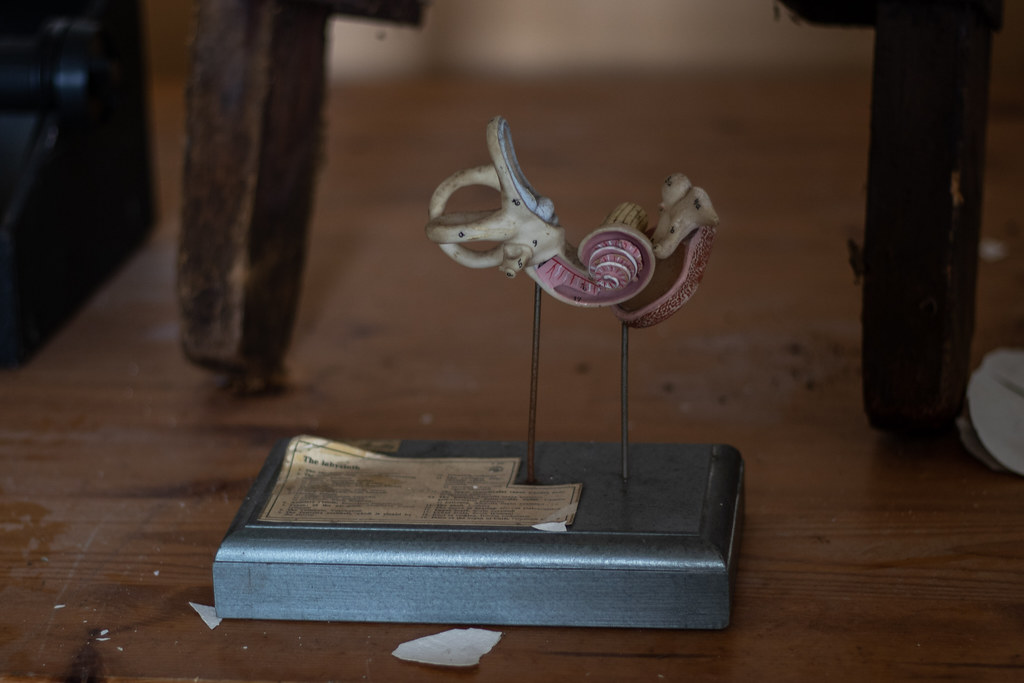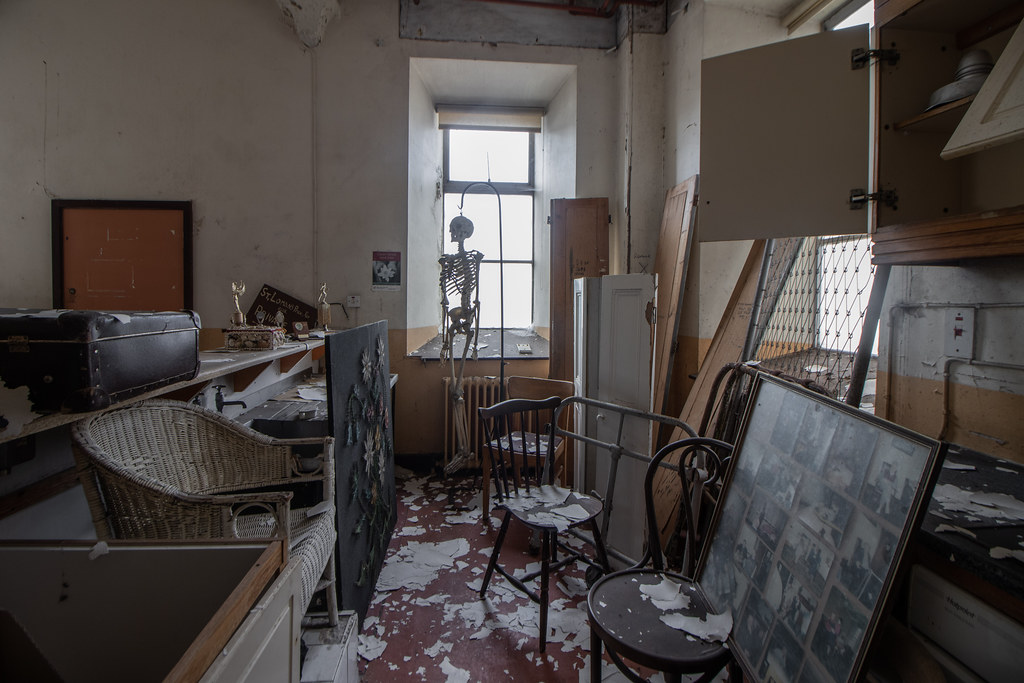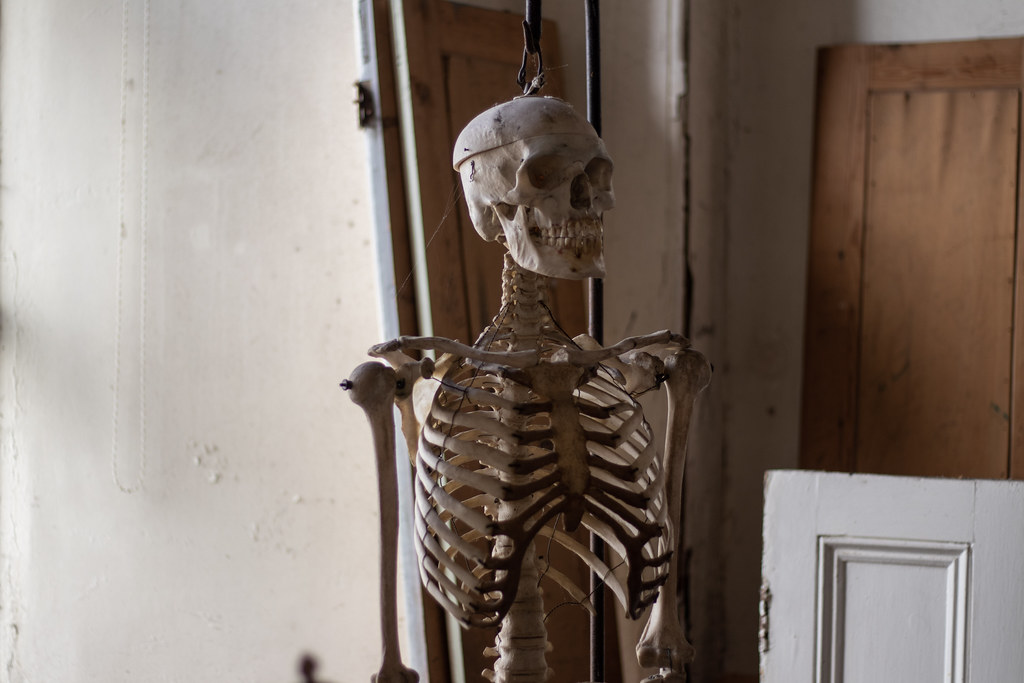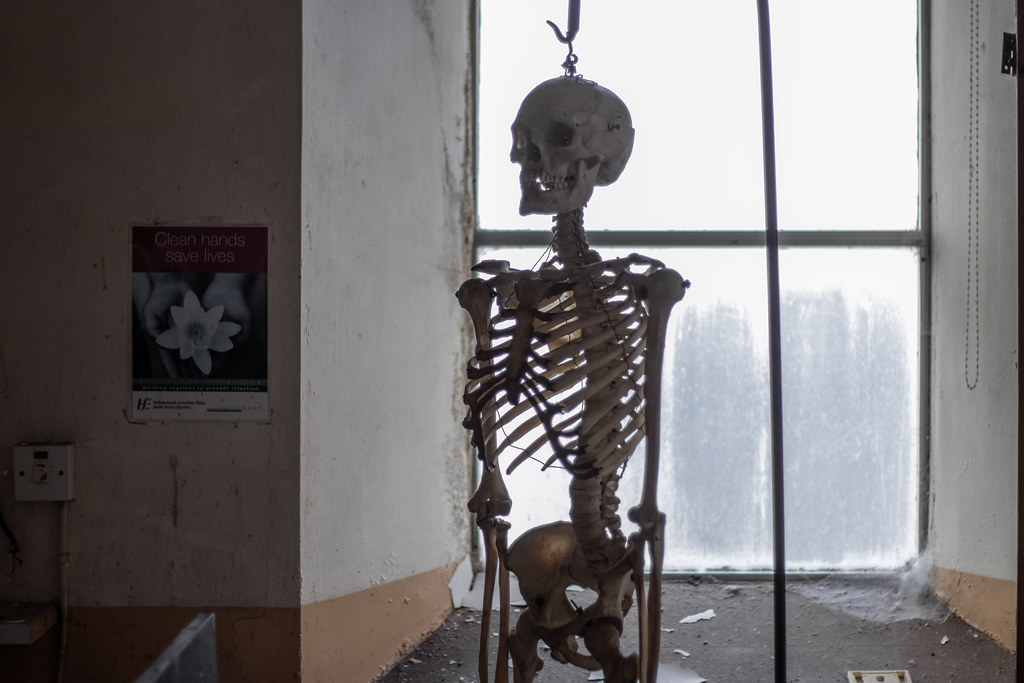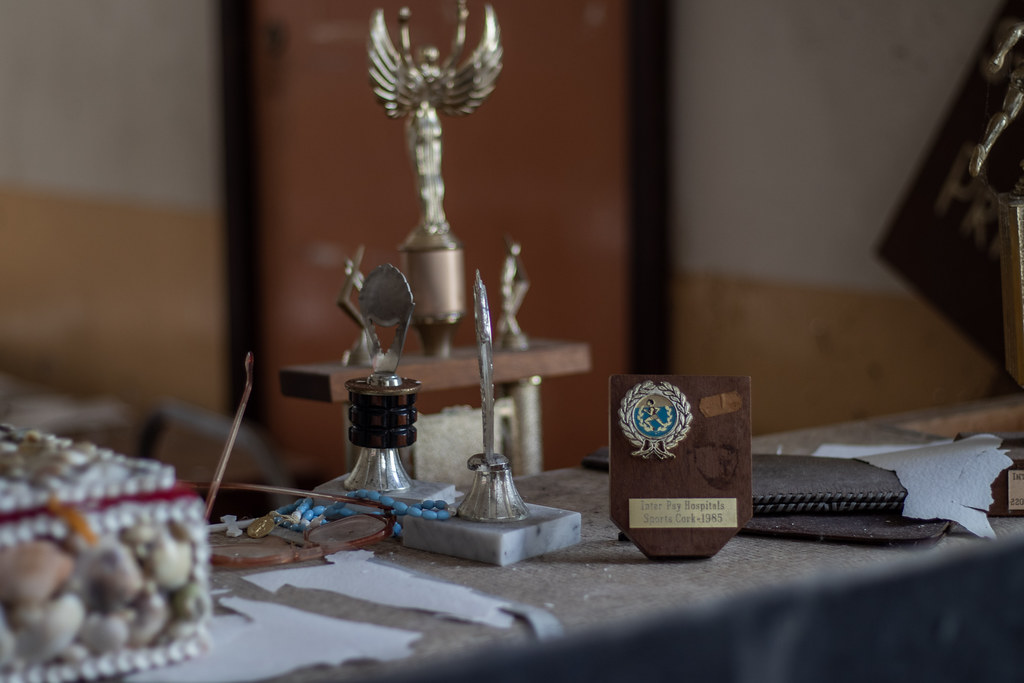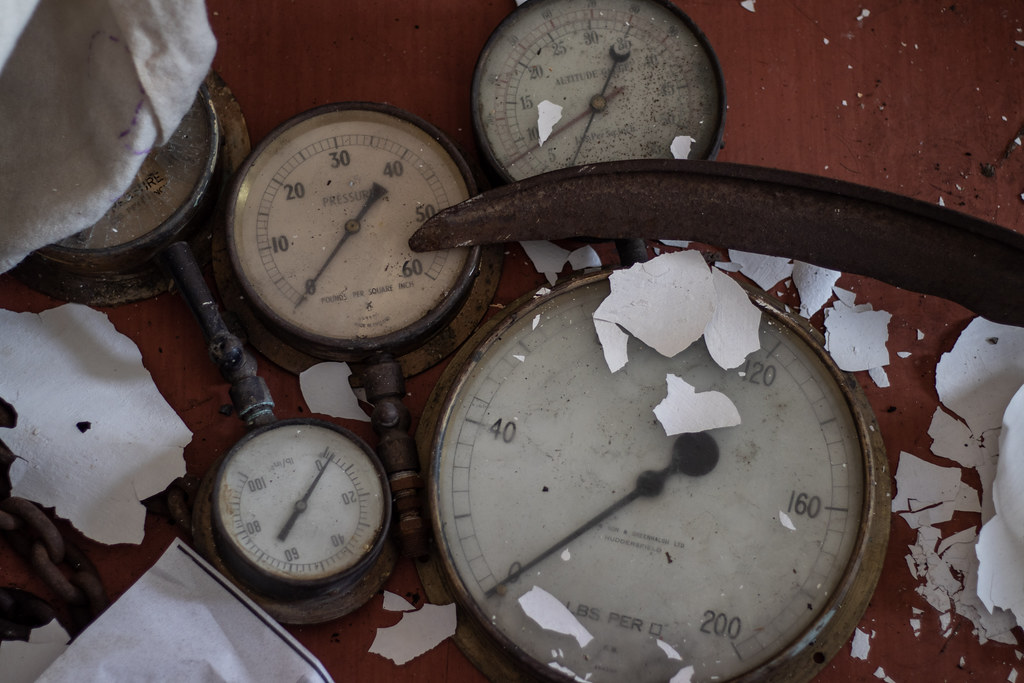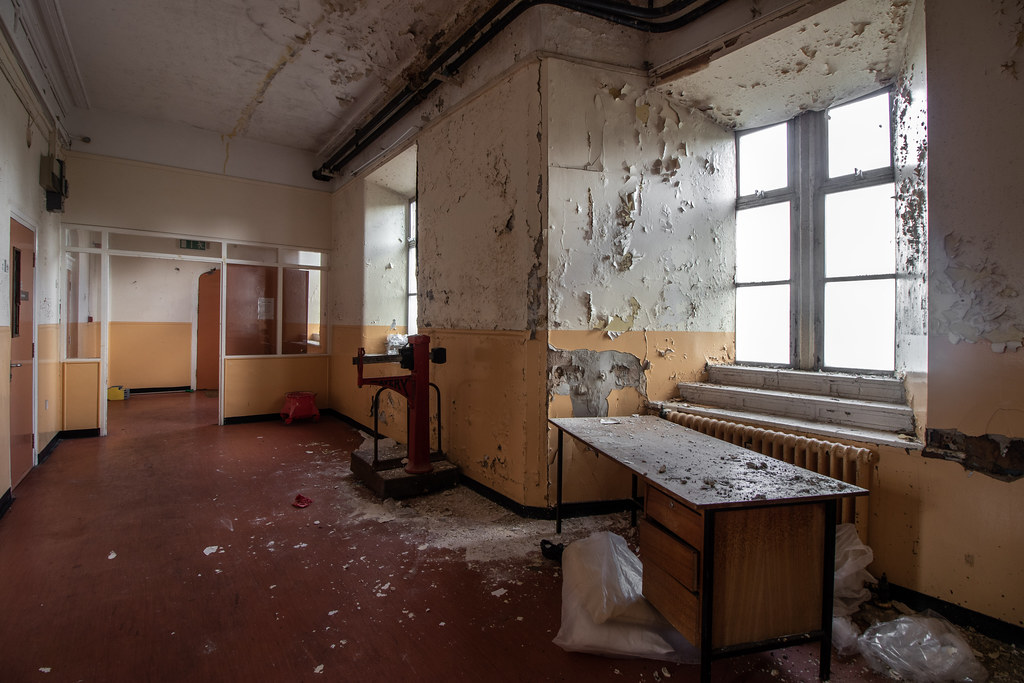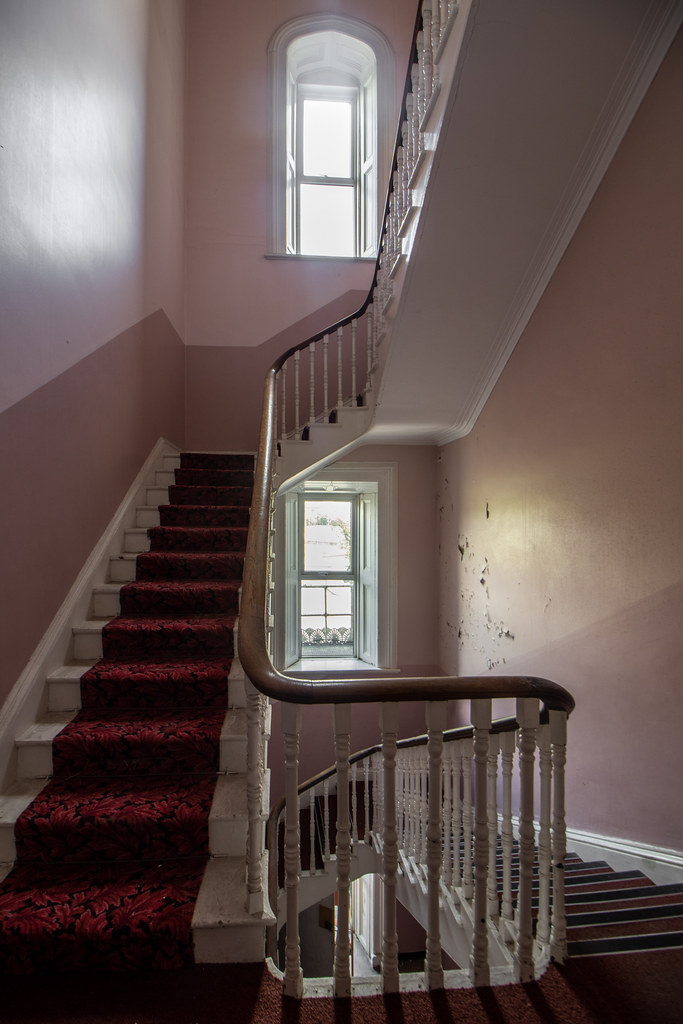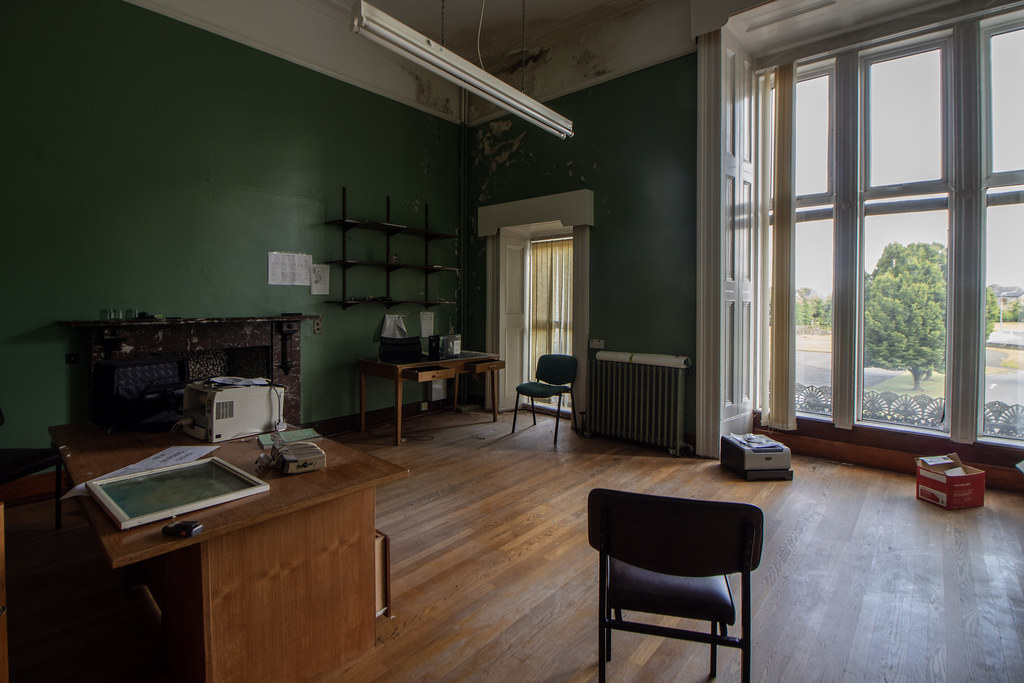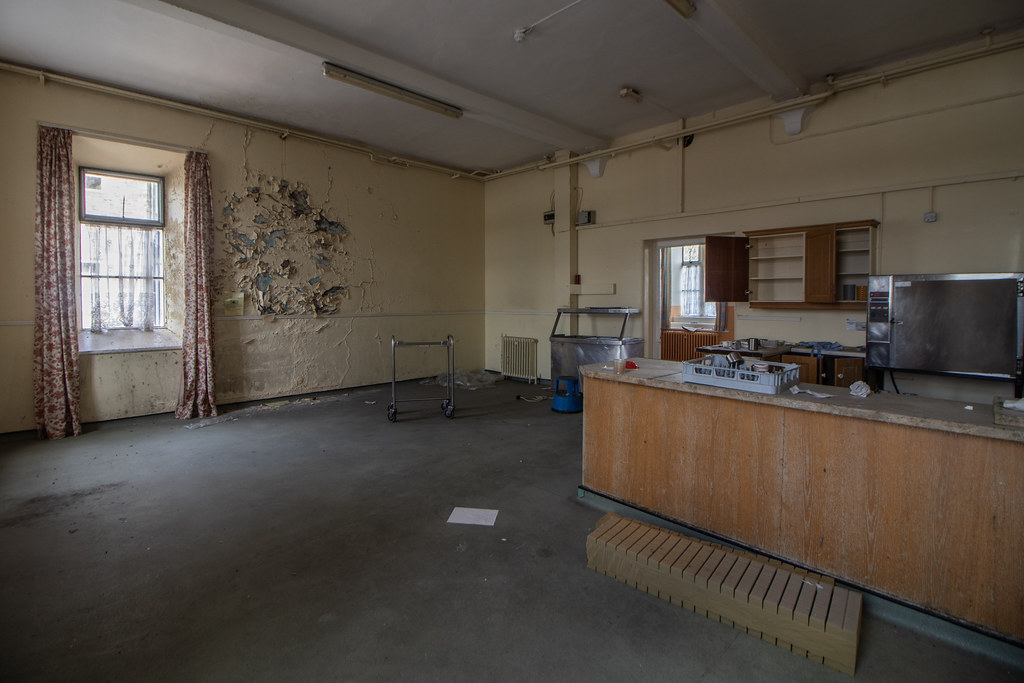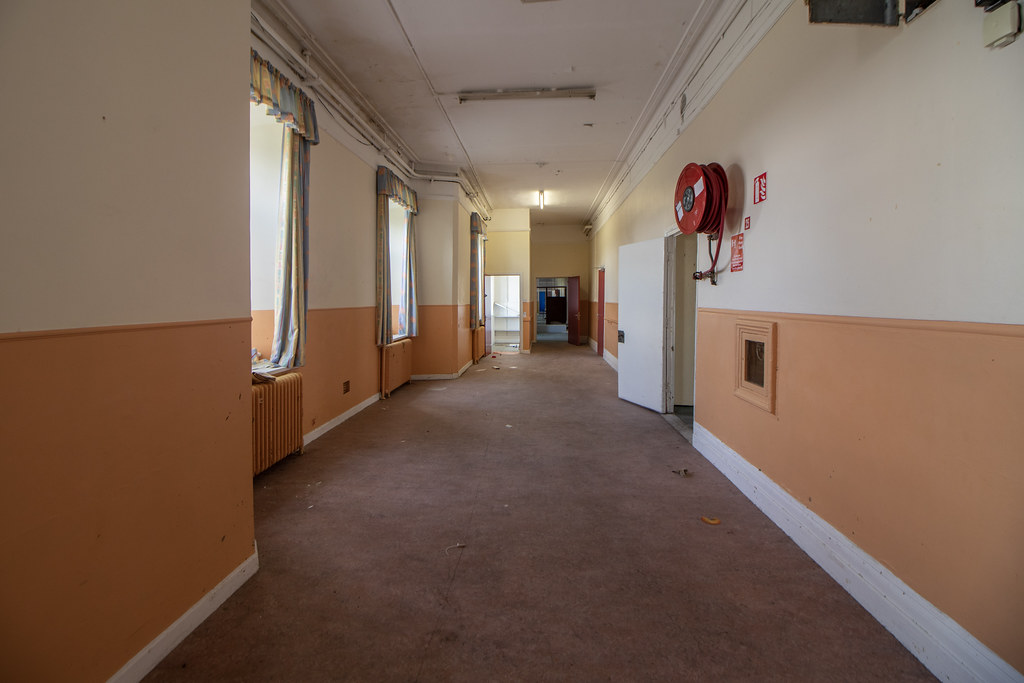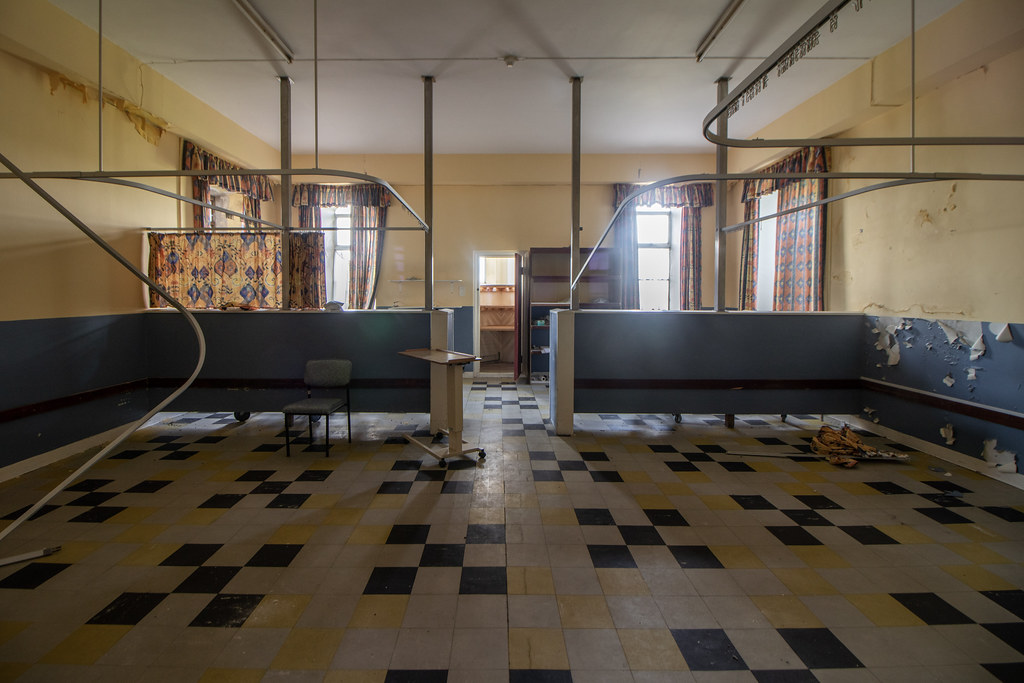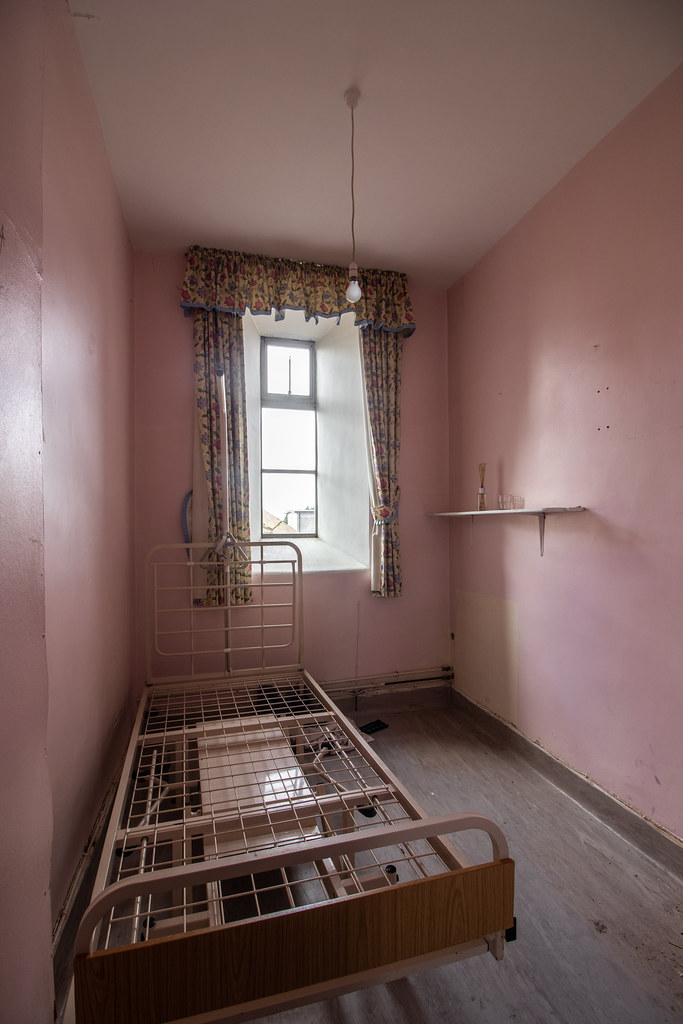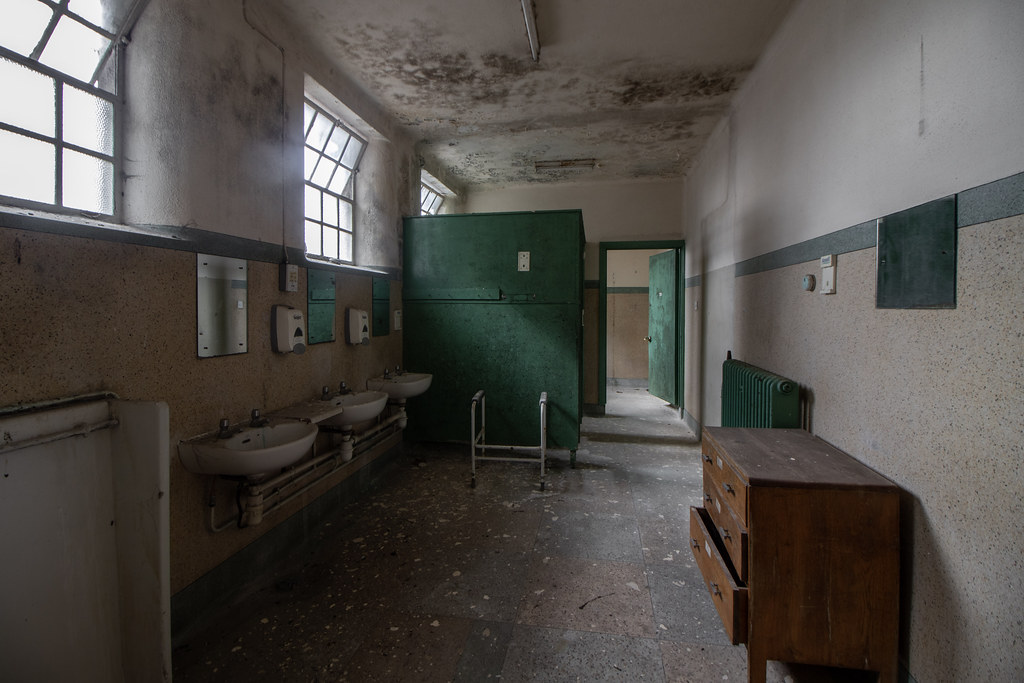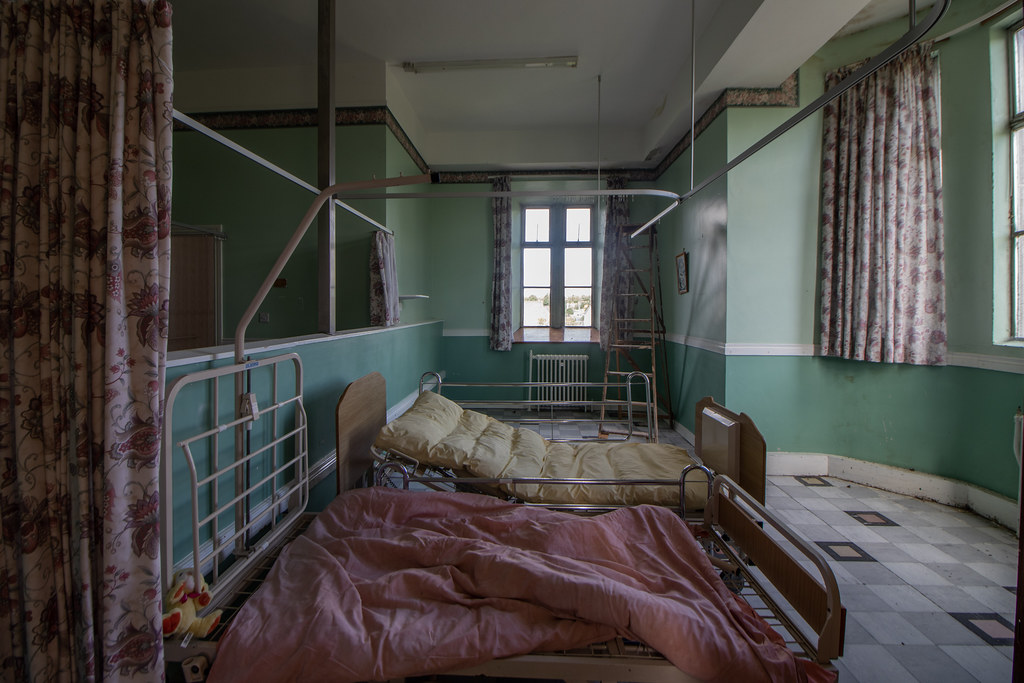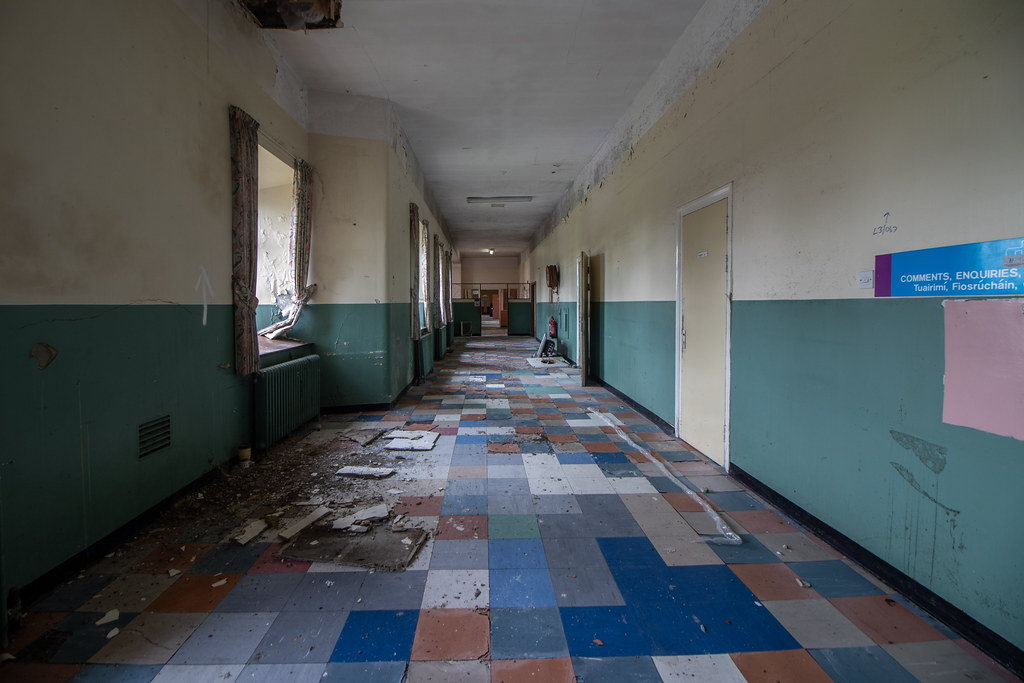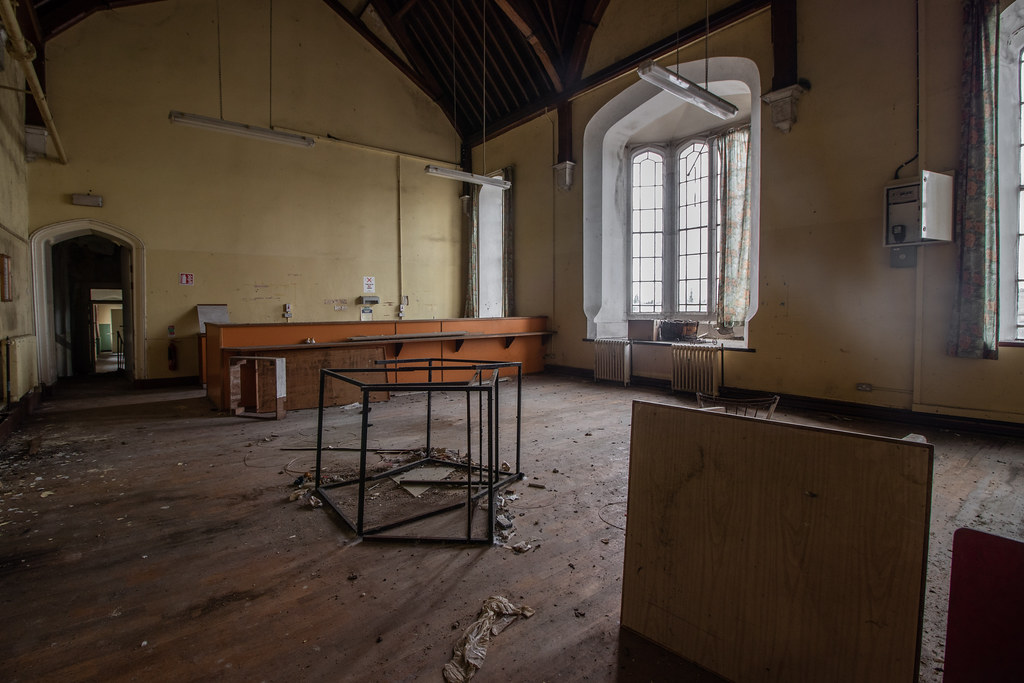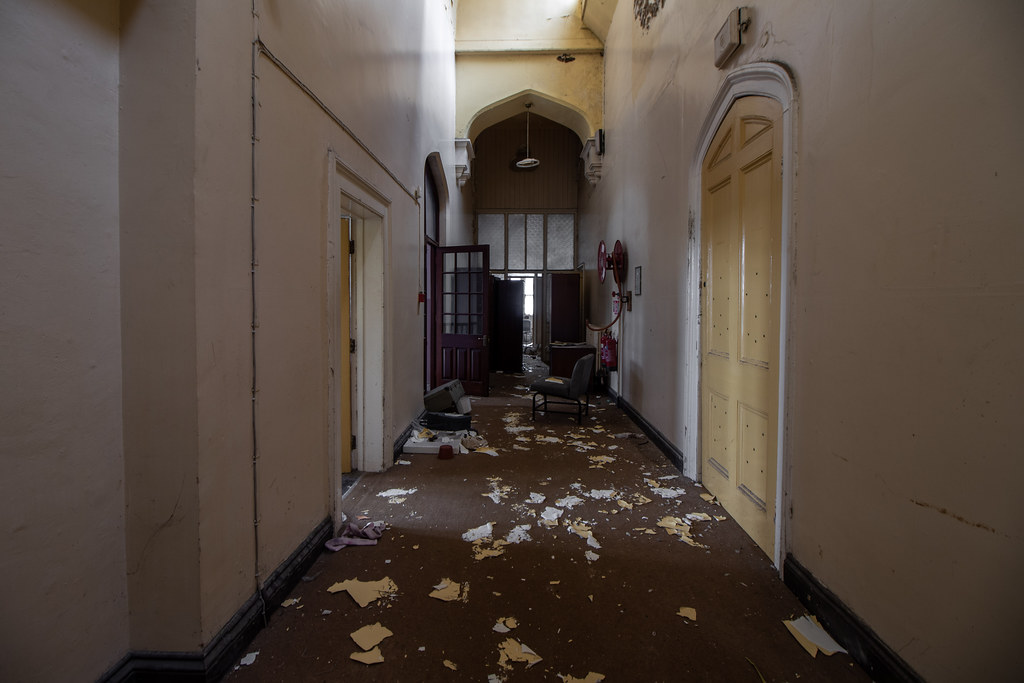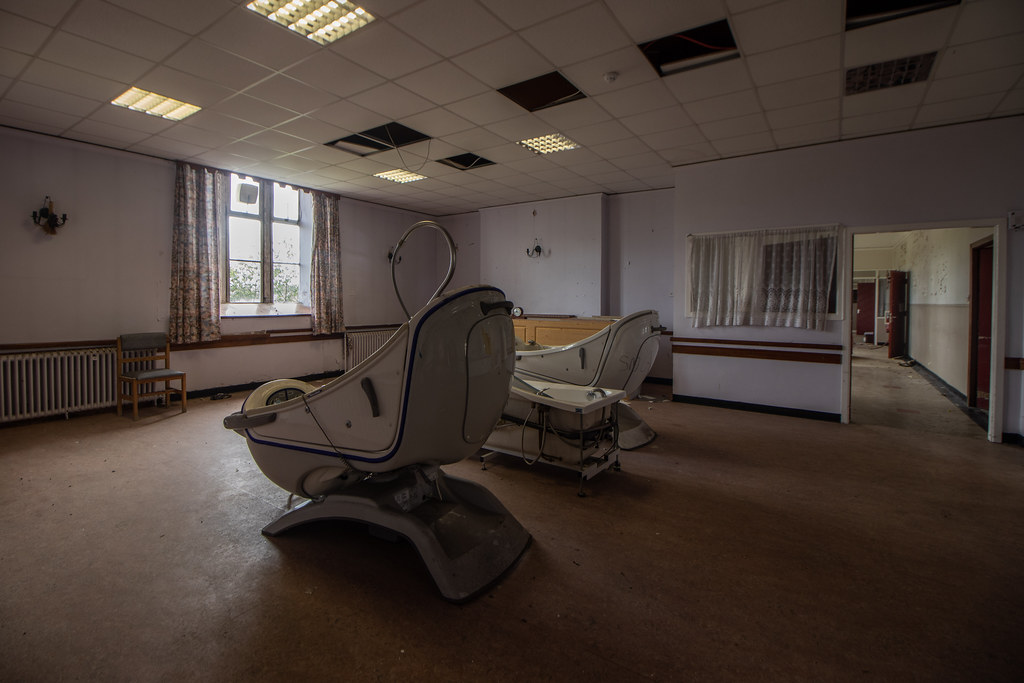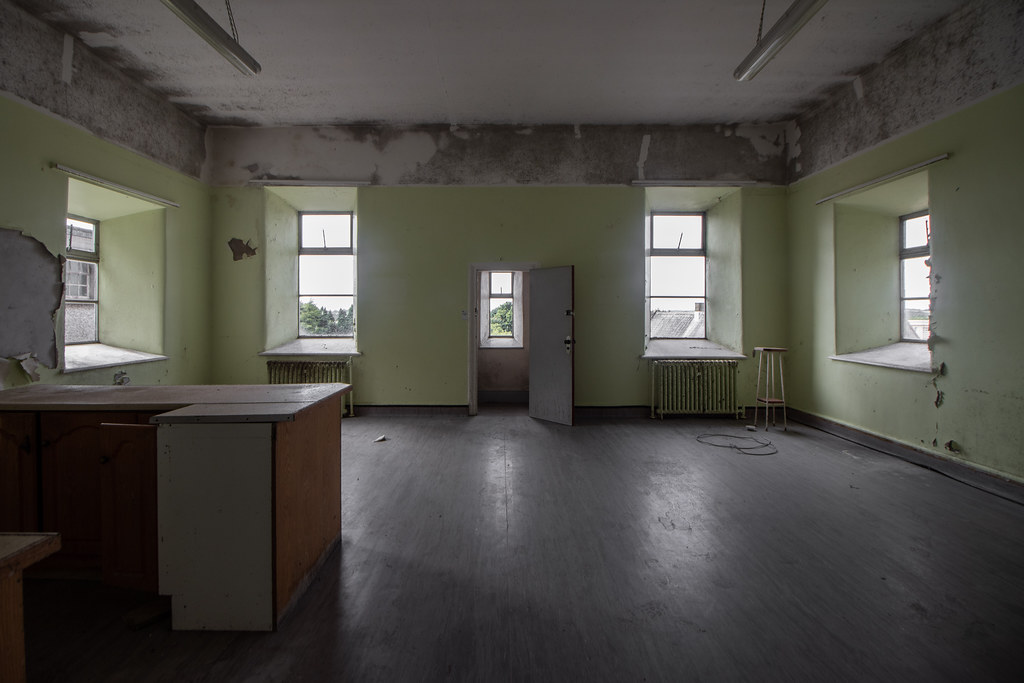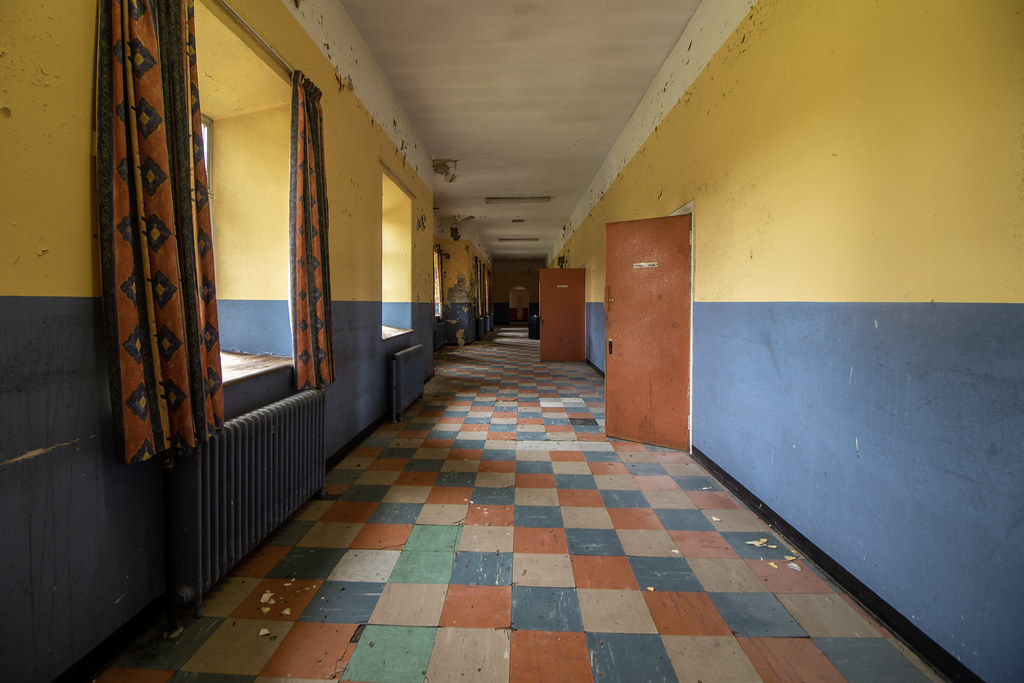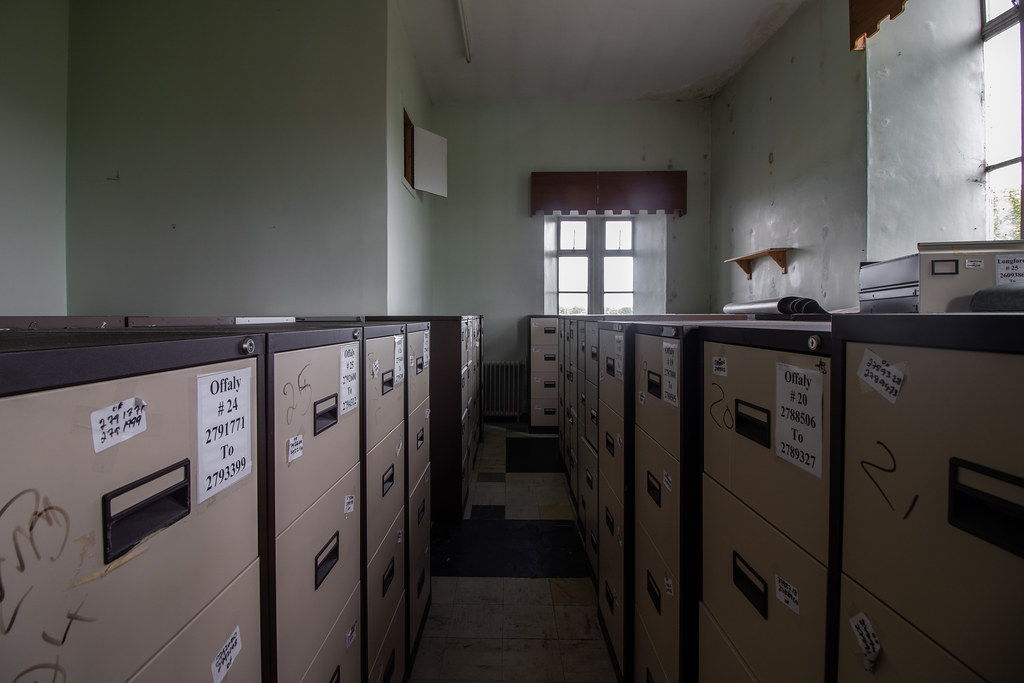St Loman's Hospital
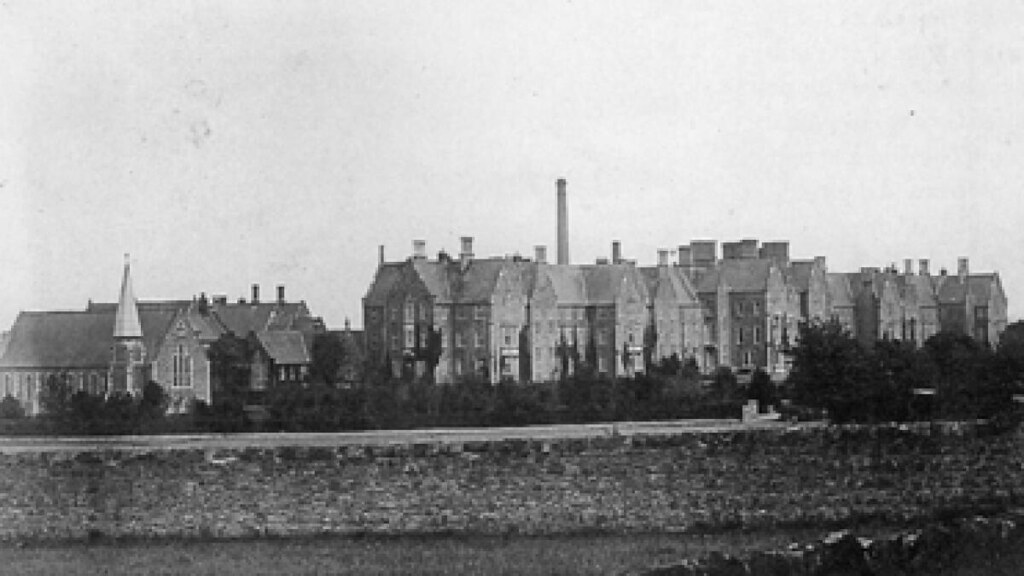
The main block of St Loman’s is a freestanding 41 bay, 3 storeyed hospital built on twenty-five acres of land purchased in 1848 for which eventually opened as the Mullingar District Lunatic Asylum in August 1855. It was extended 40 years later. The hospital is a well-detailed Victorian institutional complex, in the Gothic style with extensive Tudor Gothic detailing. The structure was built to designs by John Skipton Mulvany, possibly the most celebrated architect operating in Ireland at the time. It cost £35,430 to build, equivalent to €3.2 million in today and was built to accommodate 300 patients. The first patients were transferred from the Richmond Surgical Hospital in Dublin, and all of them were female. In the grounds of the hospital, there are various buildings including a chapel which was constructed 1886, a nurses' home and an infirmary which were built 1940. While looking further into the history of the asylum it was apparent that there were plenty of dramatic events that took place over its lifetime. A severe lack of care for the patients was a common occurrence during the time the hospital was open. There are multiple accounts of mistreatment in the early to mid-20th century. The most notable account was of Hanna Greally who was admitted in 1943 by her mother after witnessing the London Blitz. Greally published a book in 1971 called Bird’s Nest Soup which is said to provide a grim picture of life inside one of these institutions in the 40s-50s. On top of the poor care at Loman’s, a reported 1304 bodies are buried in the grounds, with the last body being buried in 1970. Each grave is unmarked, and a cross is stored somewhere in an outbuilding on site with a number attached. Aside to the dark history behind this institute, Loman’s was subject to an ISIS chemical attack hoax where the nurse staff were delivered an envelope containing a white powder and a note with the message “ISIS is going to get you”. This sparked the Gardaí and army to respond and lockdown the hospital and put a cordon in place until the Army Bomb Disposal unit had examined the powder. The closure for this hospital should have been prompt after the Inspector of Mental Health Services produced a report in 2007 with findings of poor conditions such as peeling paint, damp, poor sanitary facilities and many more. The report ended with the statement: “every effort must be made to close the hospital immediately”. The main building shut years later in 2013. However there are 2 newer active wards within the grounds and sections that are still live connecting to the main derelict block. Thanks Theo.
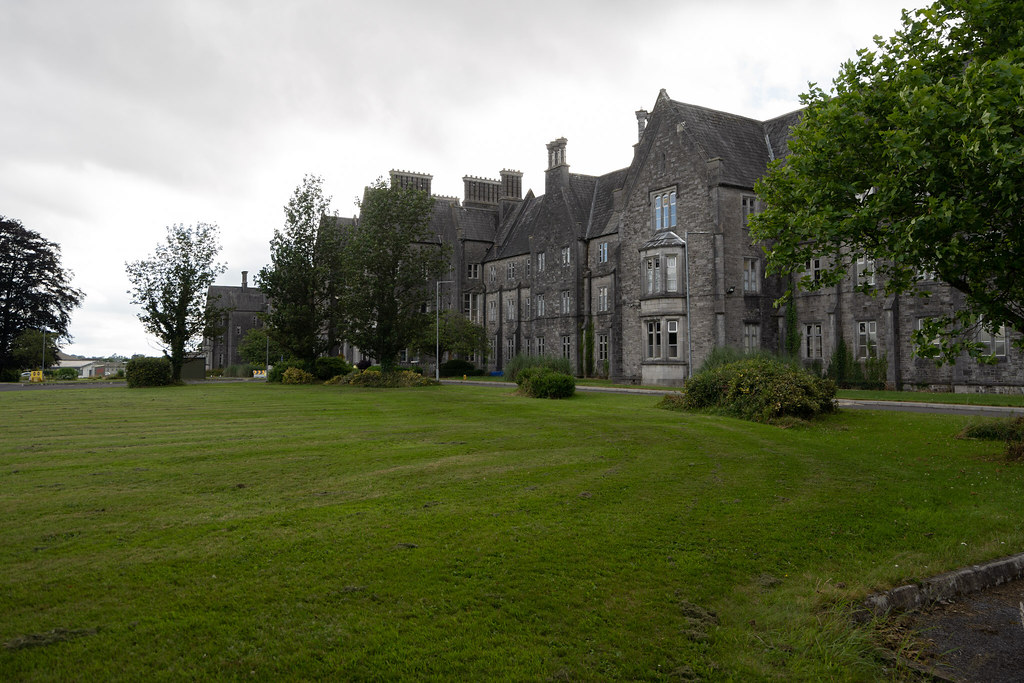
One of the better chance decisions we've made as a group. The unexpected and spontaneous ventures are always the most rewarding, with this huge, district lunatic asylum in Ireland being proof of that. We had other plans in the region, but when they didn't come to fruition and I needed to recharge my gear at a Tesco, we figured we might as well look at the nearby lead of mine featuring a huge asylum with sections apparently closed. There wasn't really much else to it than a slight aspect of overgrowth on the land around the back that had led me to pin it, as well as the factor that most Irish asylums contain disused parts.
Arriving at the site, we initially thought we would be looking at a miniscule segment of the colossal structure from it's imposing, tidy front. However, moving around the back to where it seemed a lot more active, it was clear that much more of the building was out of use than we had thought. Our opening attempts of entry were very simple and nonchalant, but gazing through the windows at classic asylum details, we then began to try more unusual methods. A worker halted us only to discover what we were doing and express his approval, which also provoked us to really work to getting in, because it felt like the opportunity was too golden. Eventually, after testing one of the dirtiest squeezes I had ever done, even requiring a clothes swap with Theo, I ended up inside a bathroom, only to find that all the doors were locked. Extreme sadness... as it was an attempt where I was convinced if I got through, I wouldn't be leaving the same way. Getting back out was immensely difficult and needed a guide on the opposing side of the wall, but eventually it was deemed possible. Thankfully, the next window along worked fine and I was in.
Having left my equipment in Tesco, the others scooted off to collect it. They went on the way accompanied with a video from me, 'Hi, I'm currently stuck, but these here are my friends and I give permission for them to get my stuff. Thanks,' something like that. Meanwhile, myself and Oli found a door to open and started to meander around the site, uncovering more stunning asylum iconography as we did so. We couldn't believe the state of the asylum, with minimal decay and practically everything left behind. It was truly fascinating walking through, unknowing what exceptional gems would be in each room, such as a perfectly intact dentist chair in an upstairs canteen. The others soon returned and we spent a solid five hours within the complex.
Starting on the ground floor of three. There is a basement there, but unfortunately, we ran out of time pressured by a security guard. Some real interest could be stashed down there.
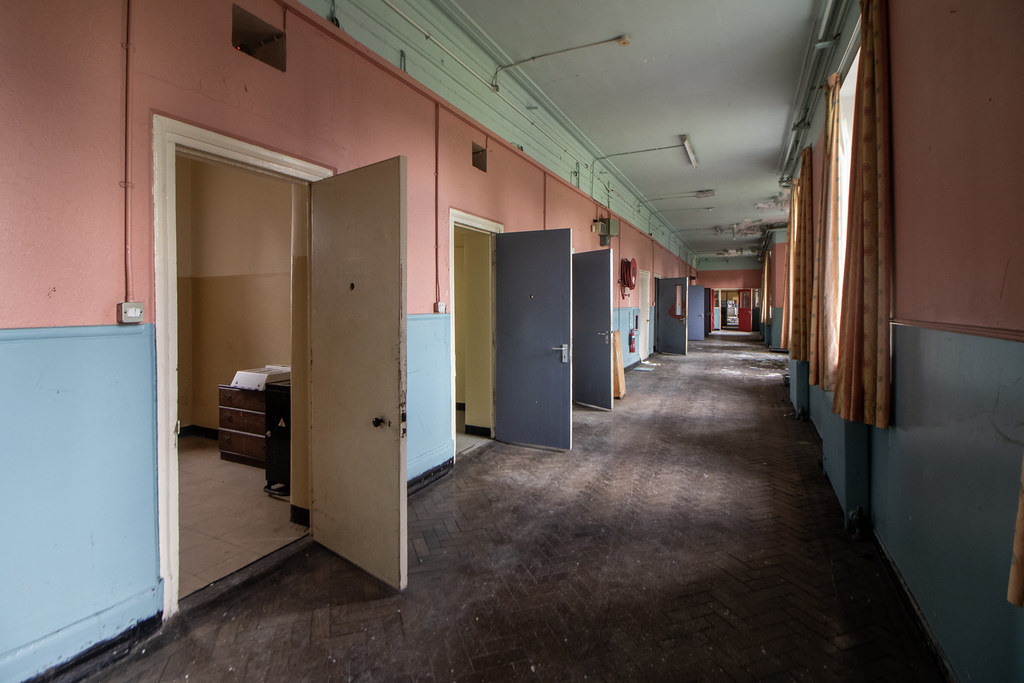
The far west side of the main block's corridor was blatantly abandoned, with some beautifully coloured corridors.
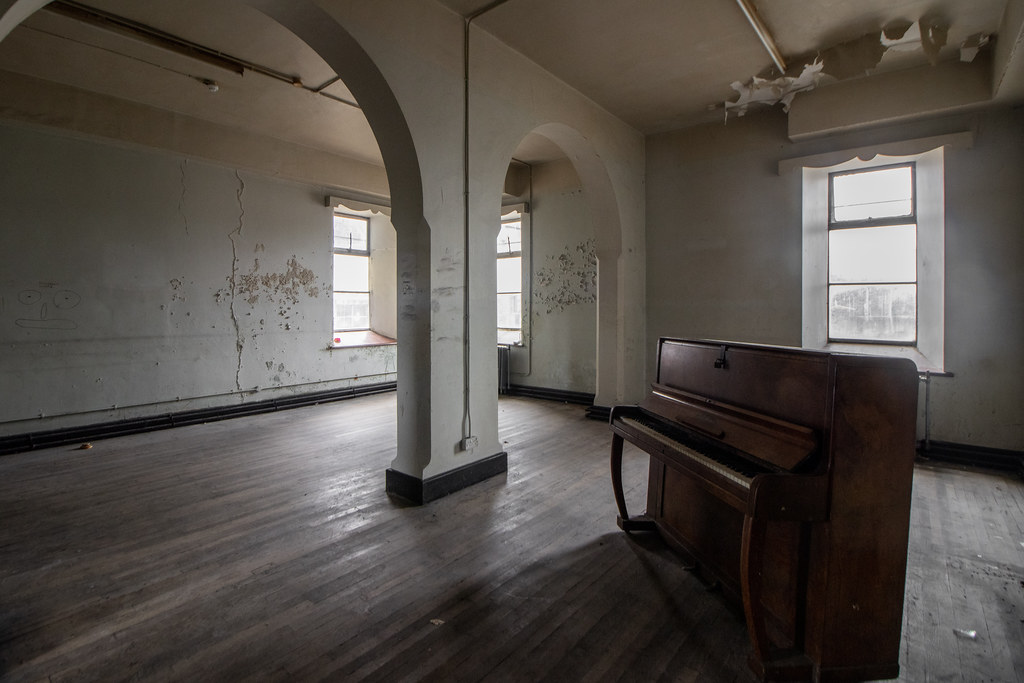
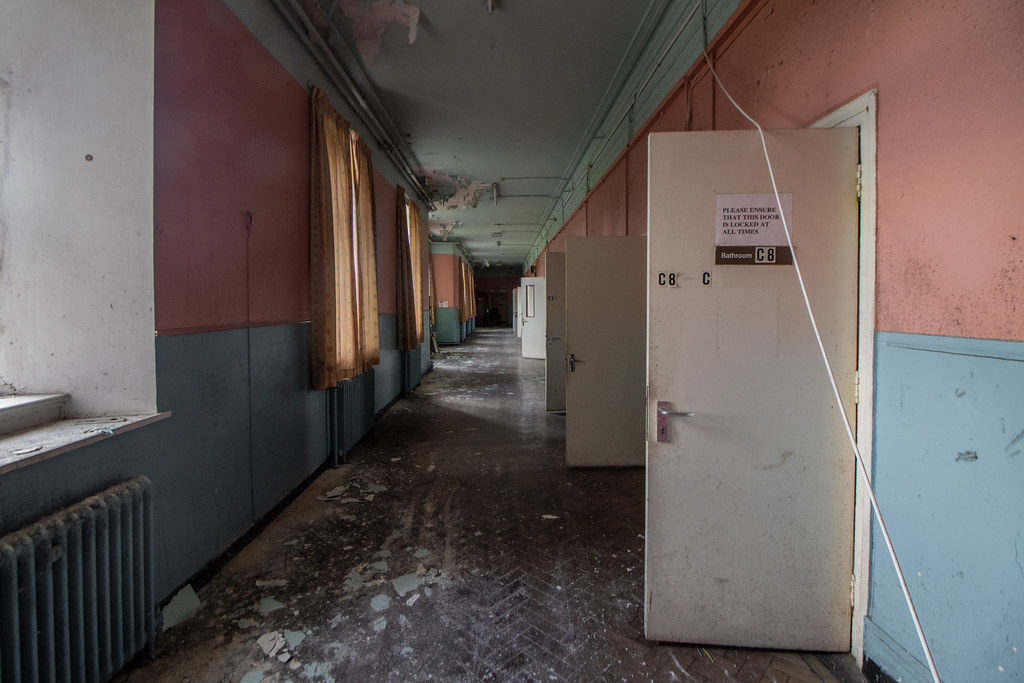
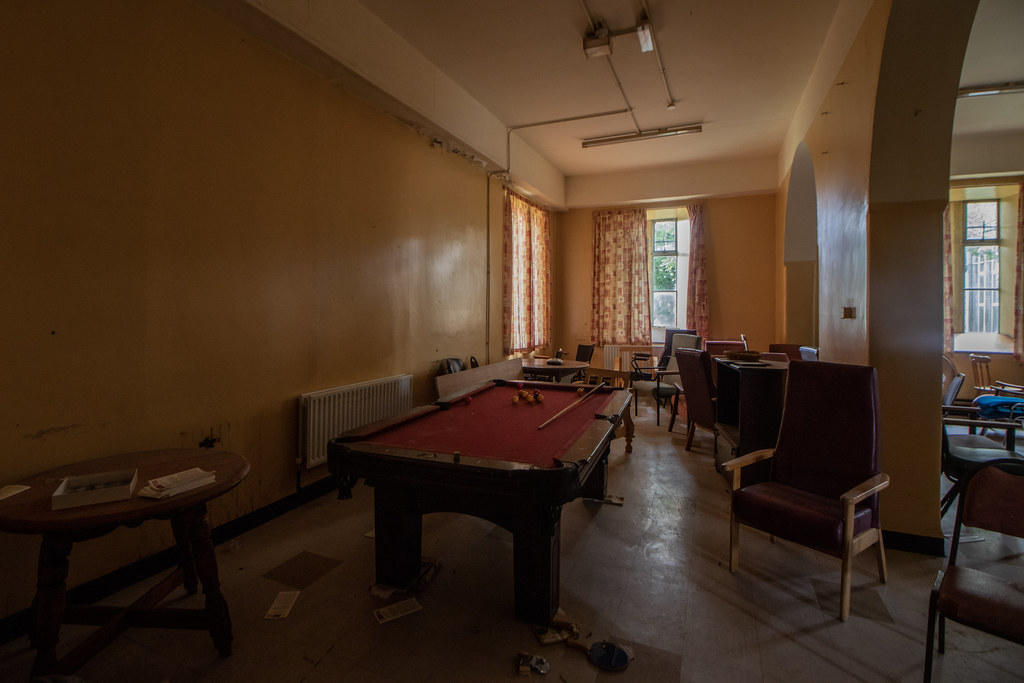
Common room. The fire alarm was going off here.
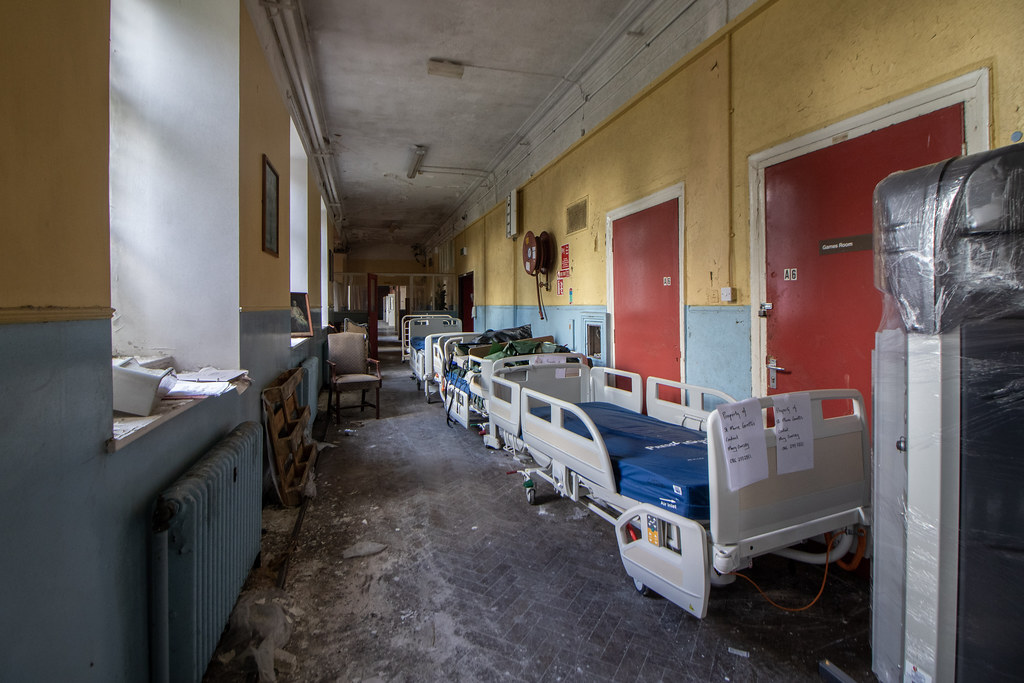
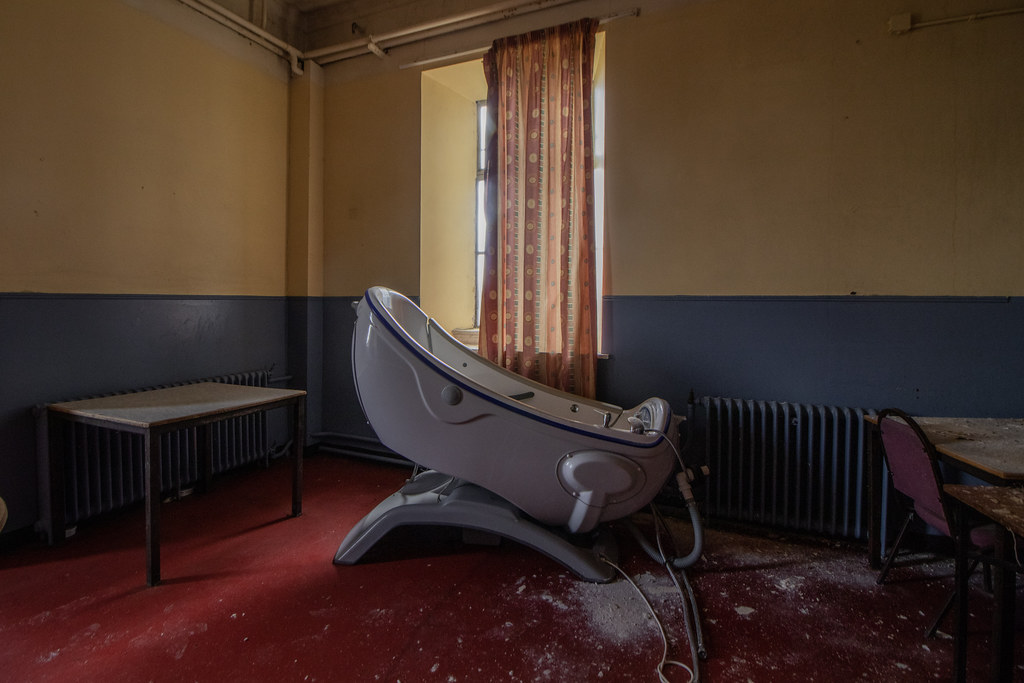
The first of many hydrotherapy baths.
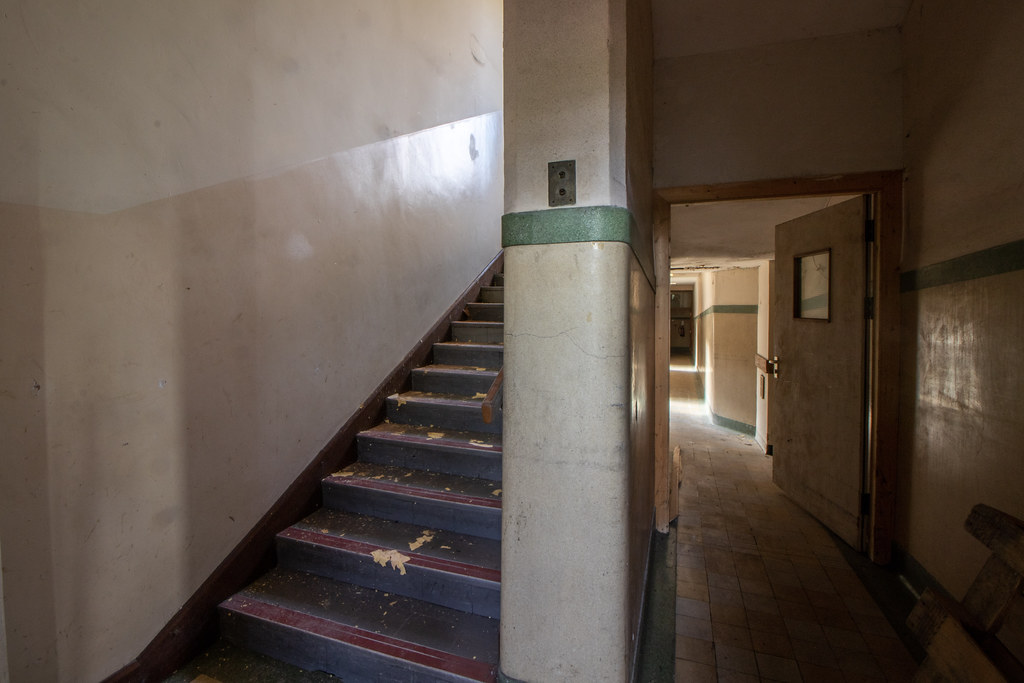
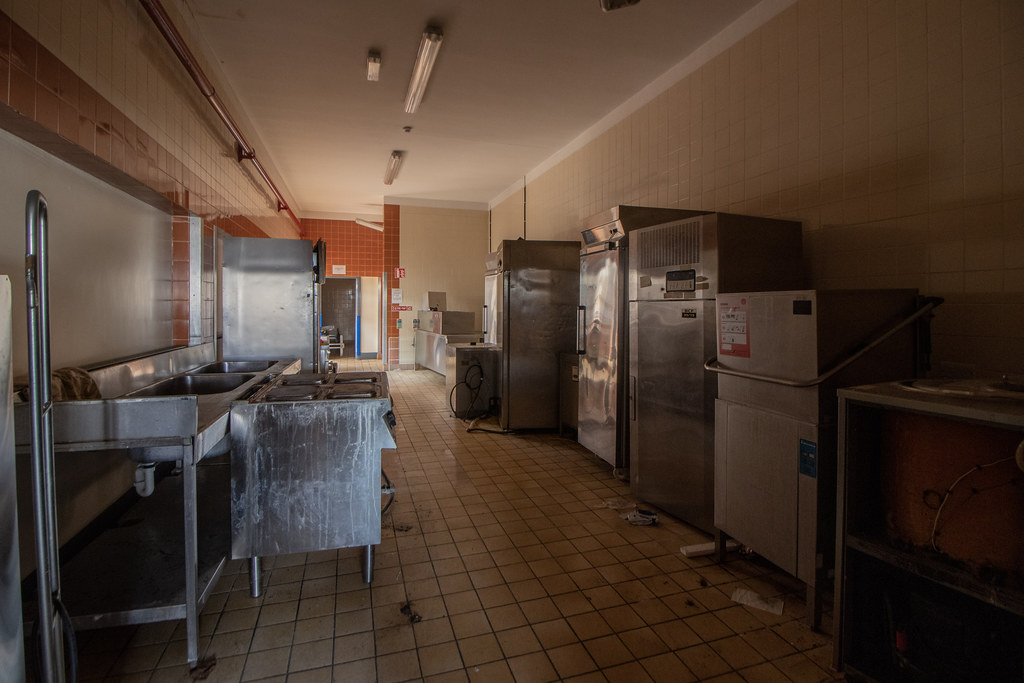
On the way to the kitchens, which directly connects to active areas. We didn't stay here for too long, but had a lovely conversation with a worker through a window.
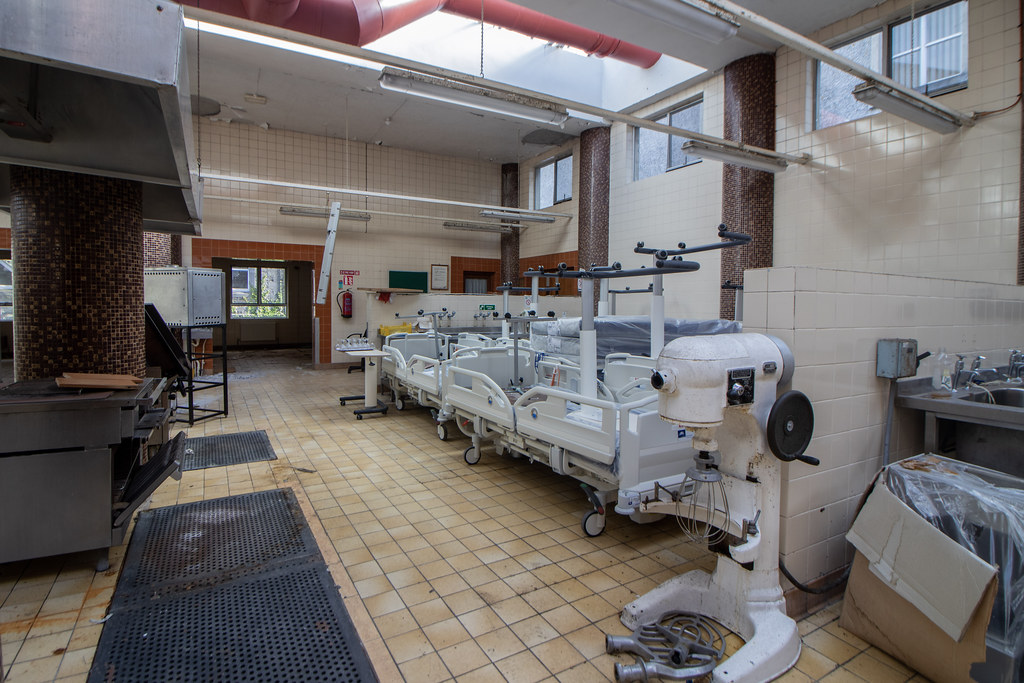
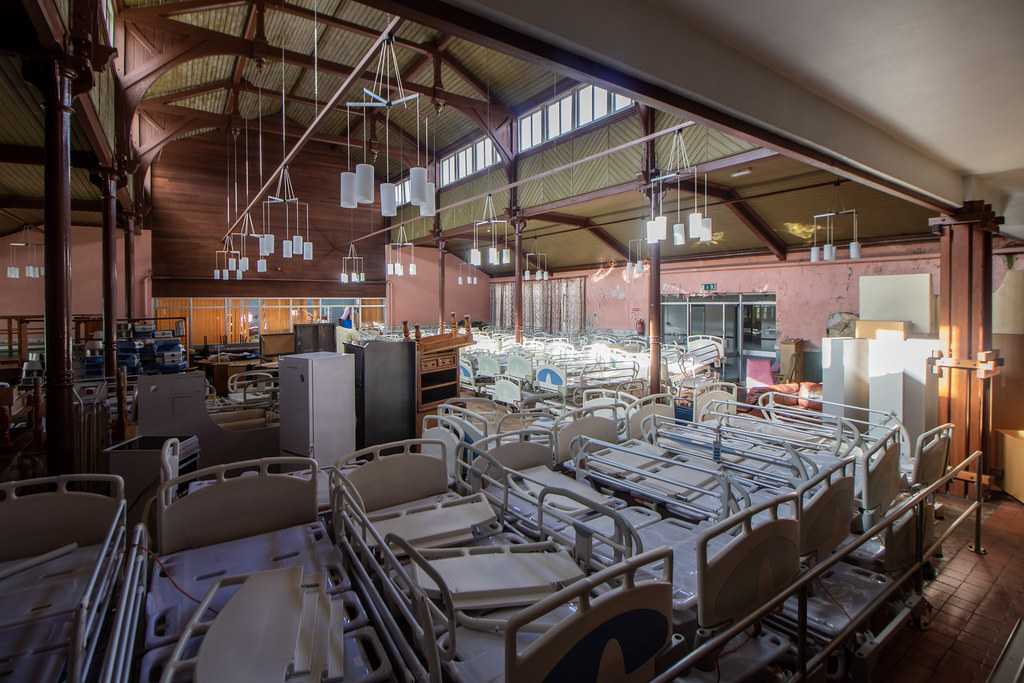
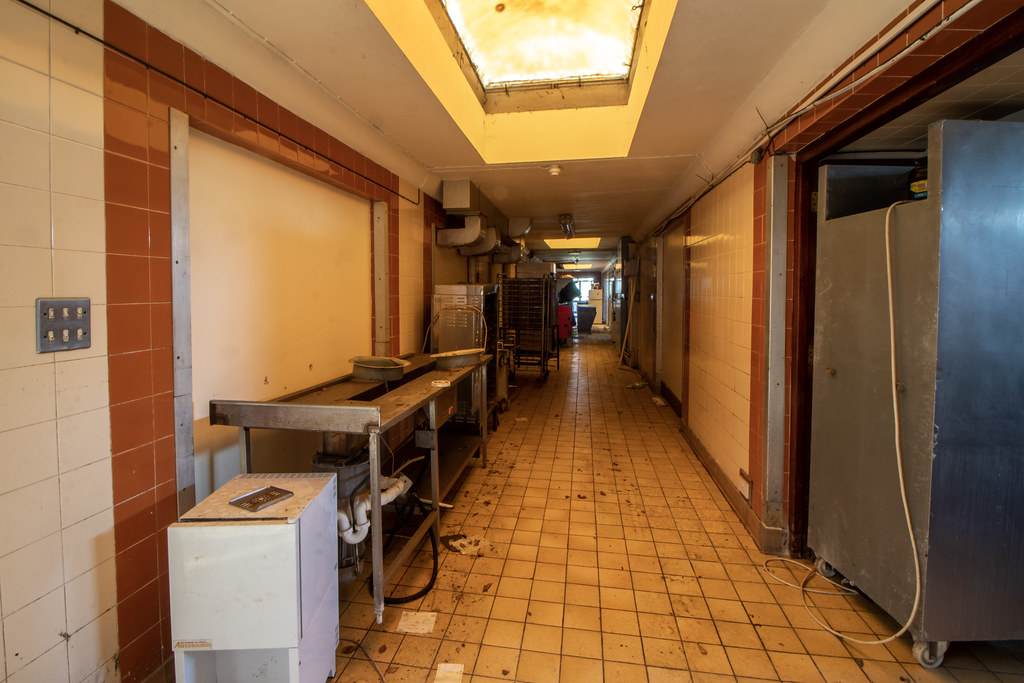
Main hall/canteen. Probably modernised in the last 30 years or so, but still boasted some ornate features. The women we spoke to informed us that the beds were to be sent back to hospitals around the country after the pandemic. It reminded me of that one in Kent.
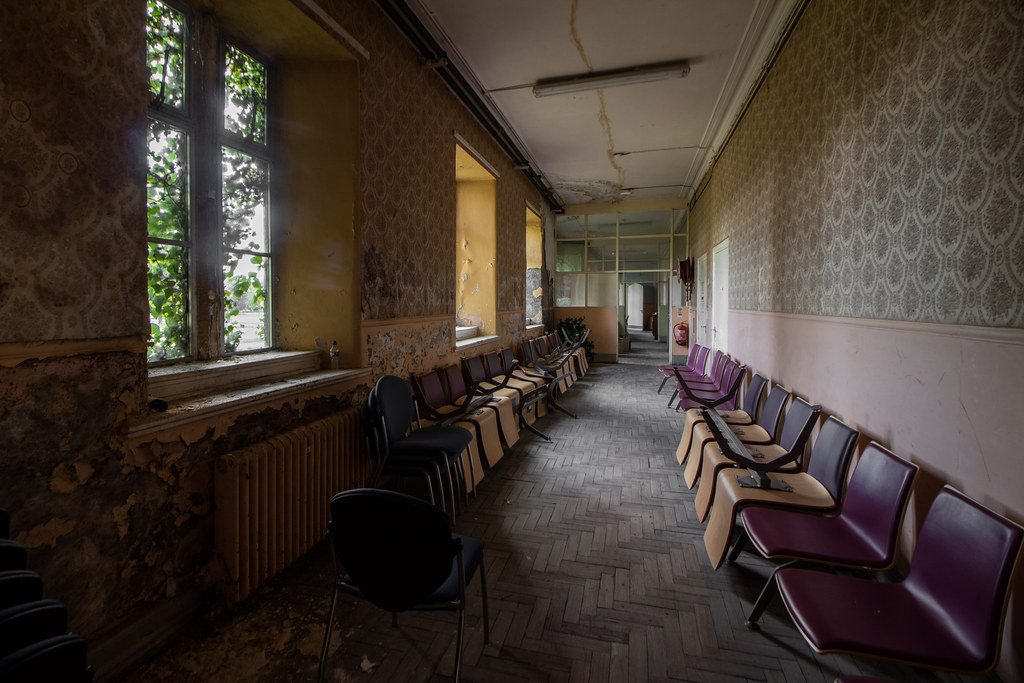
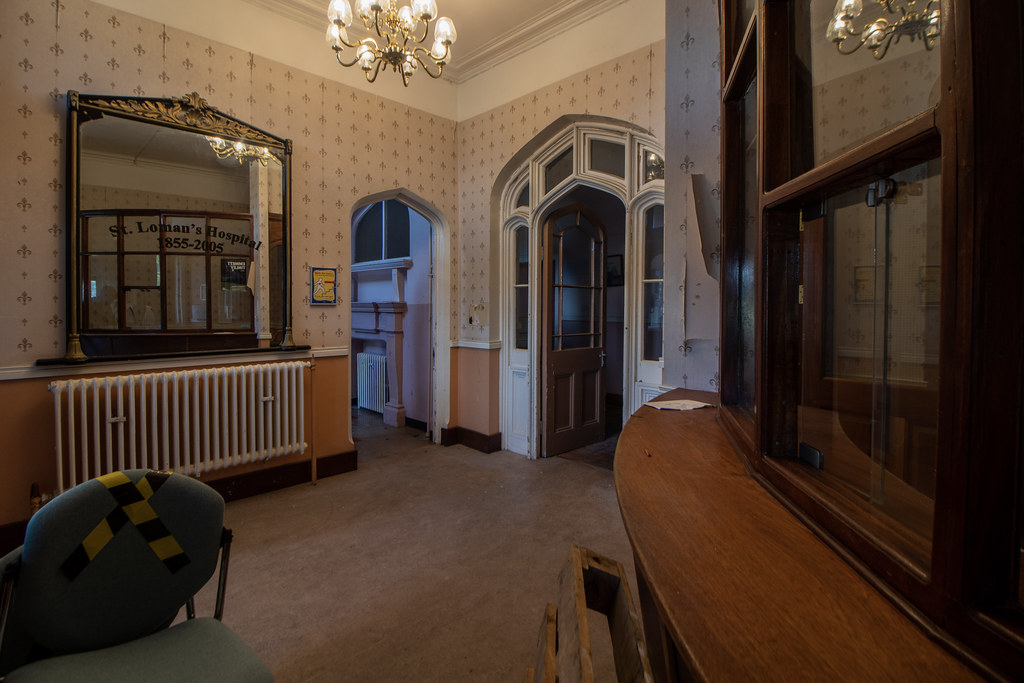
Main entrance.
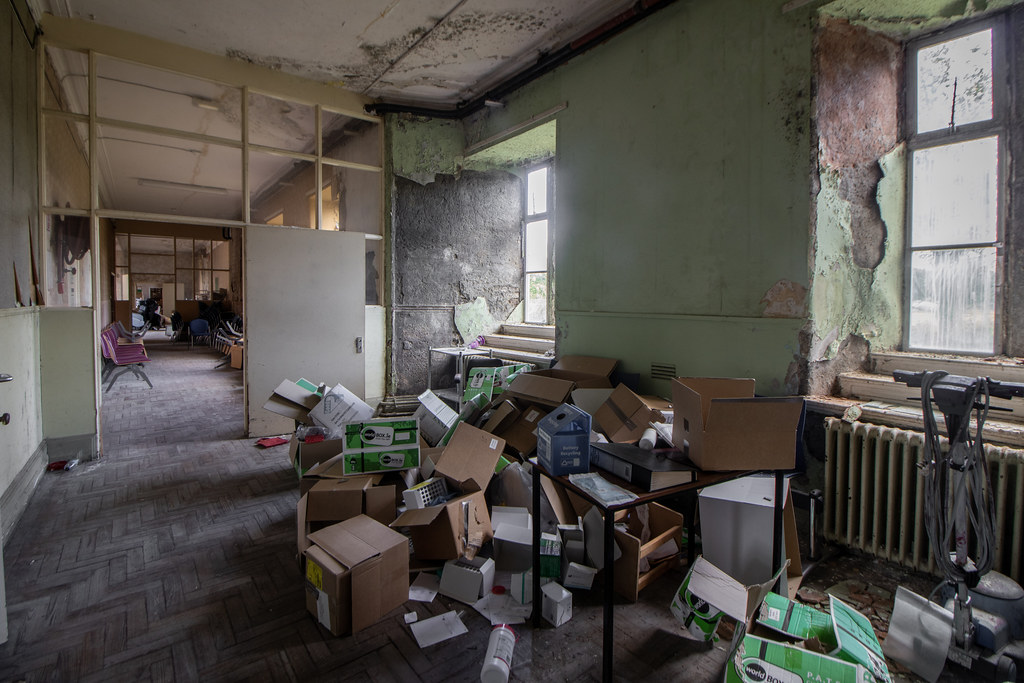
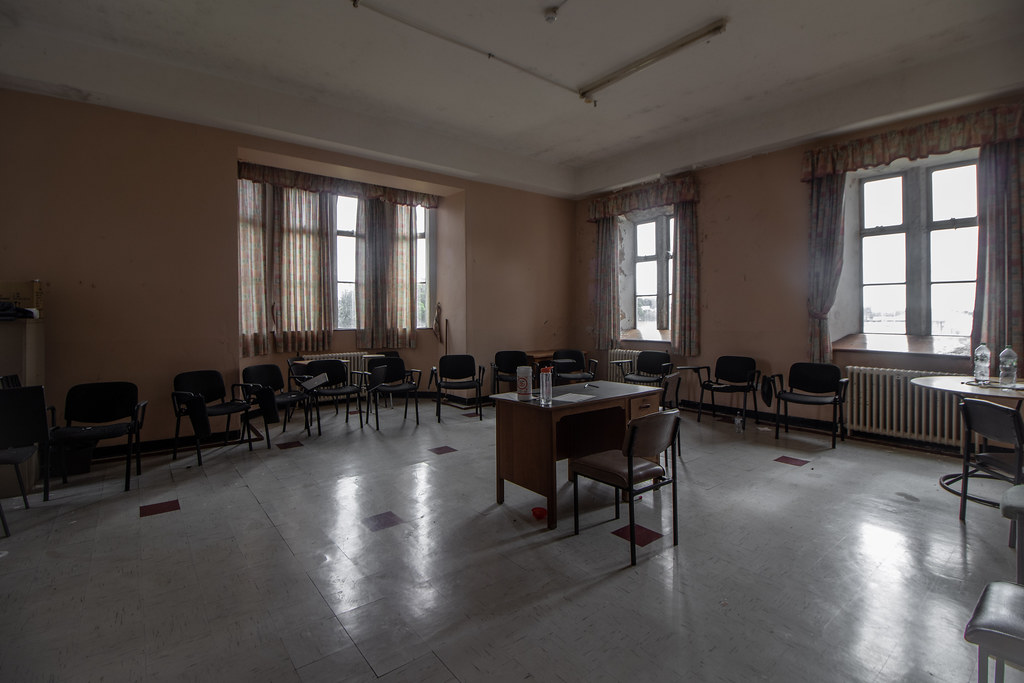
Some form of classroom.
On the second floor, it started to appear like it had been disused for a lot longer. There weren't any signs that the occasional worker may enter these sections. The corridors were conventionally hospital coloured, with outdated equipment left behind and there was a lot more natural deterioration.
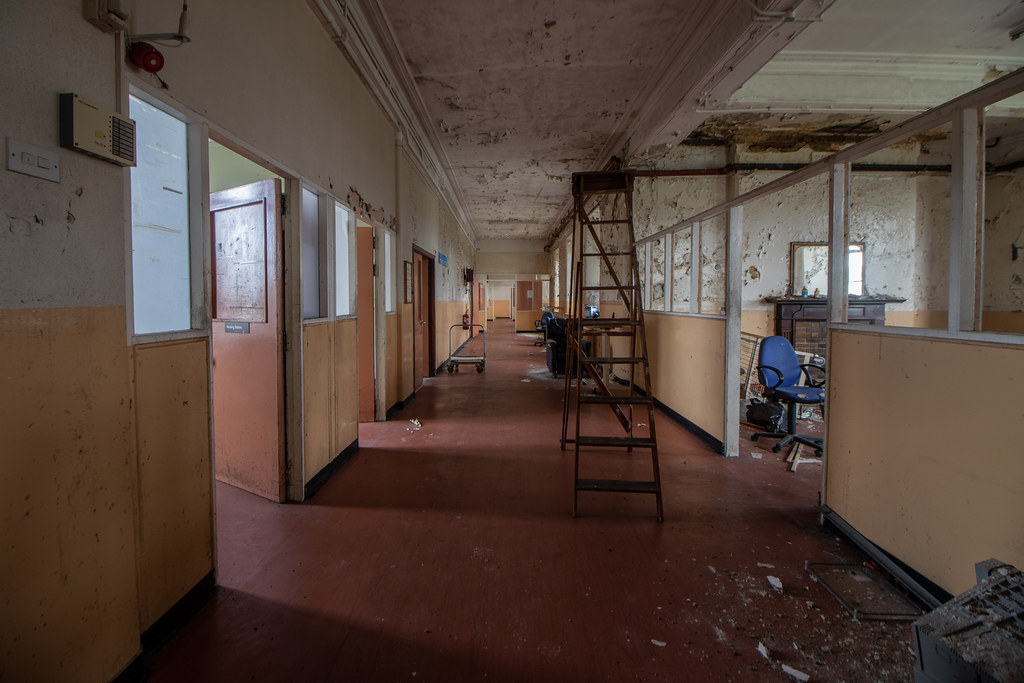
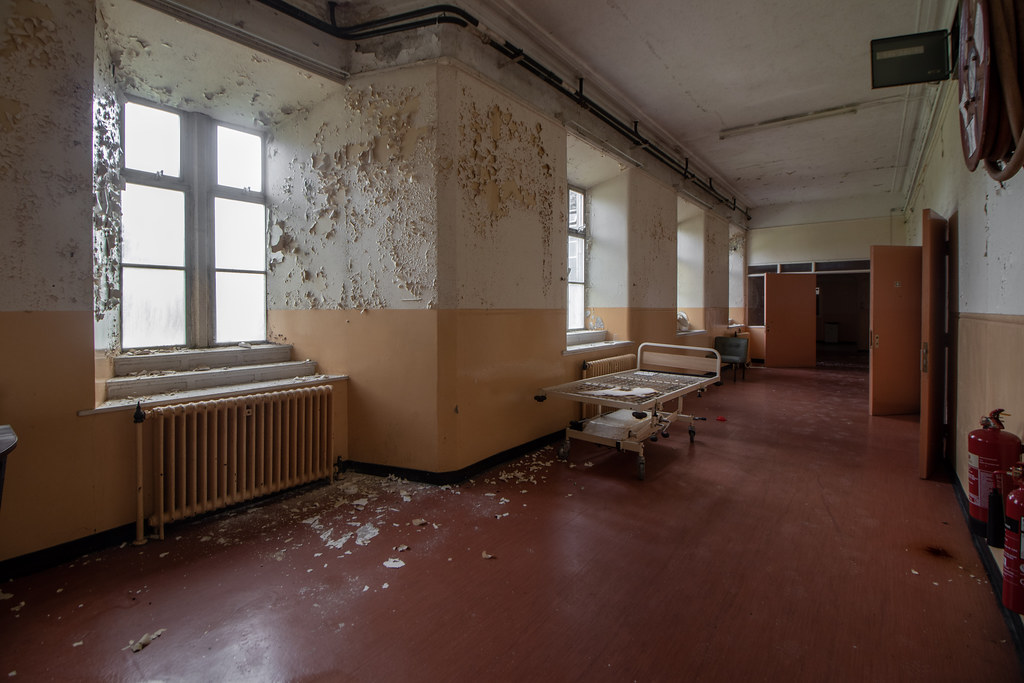
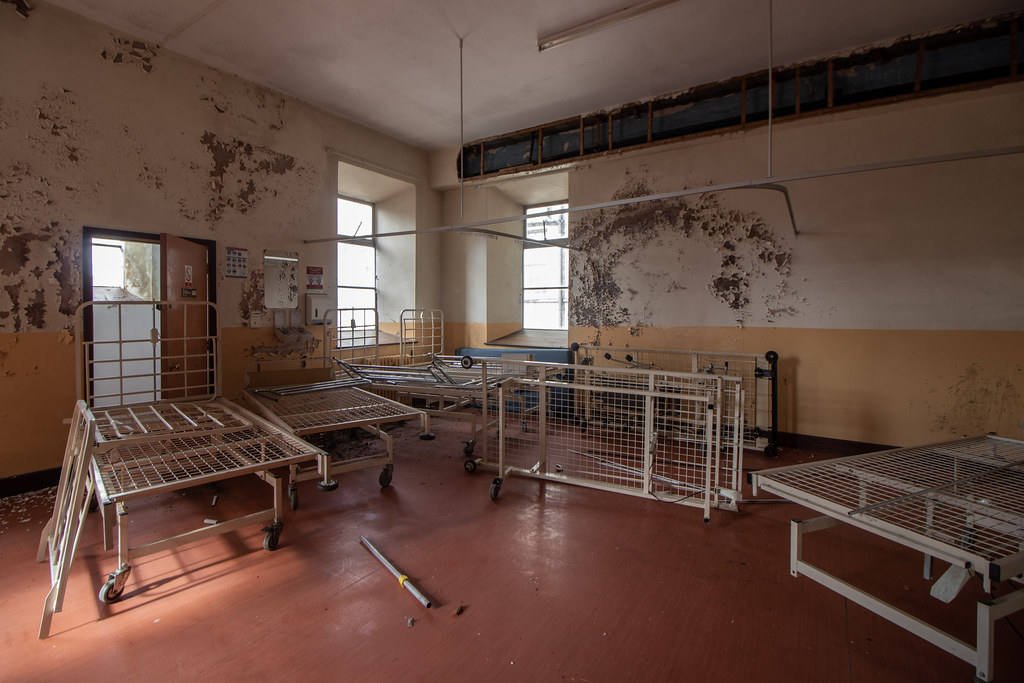
Beds.
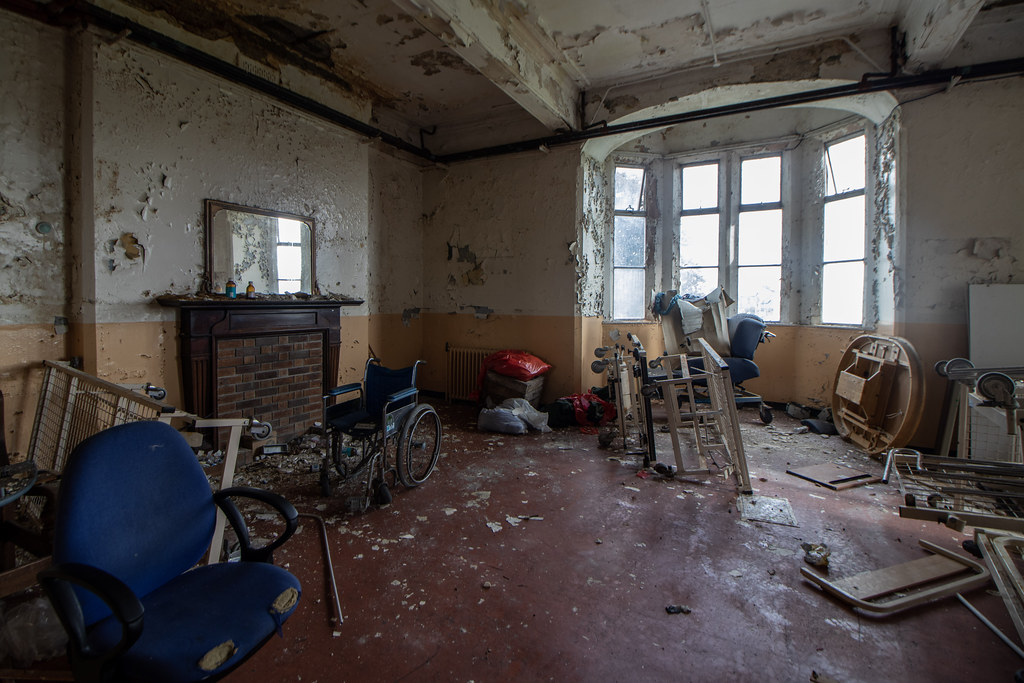
In between different corridors, these open areas were always prominent, with a nice fireplace and a bay window.
From here, we found what we'd consider the jackpot. It seemed that anything rare had been stashed in what was actually a small canteen. The room had a bit of everything, forcing us to spend a long, long time in here, looking through books, old medicine bottles and archive photographs, whilst also appreciating the many dated artefacts gathering dust.
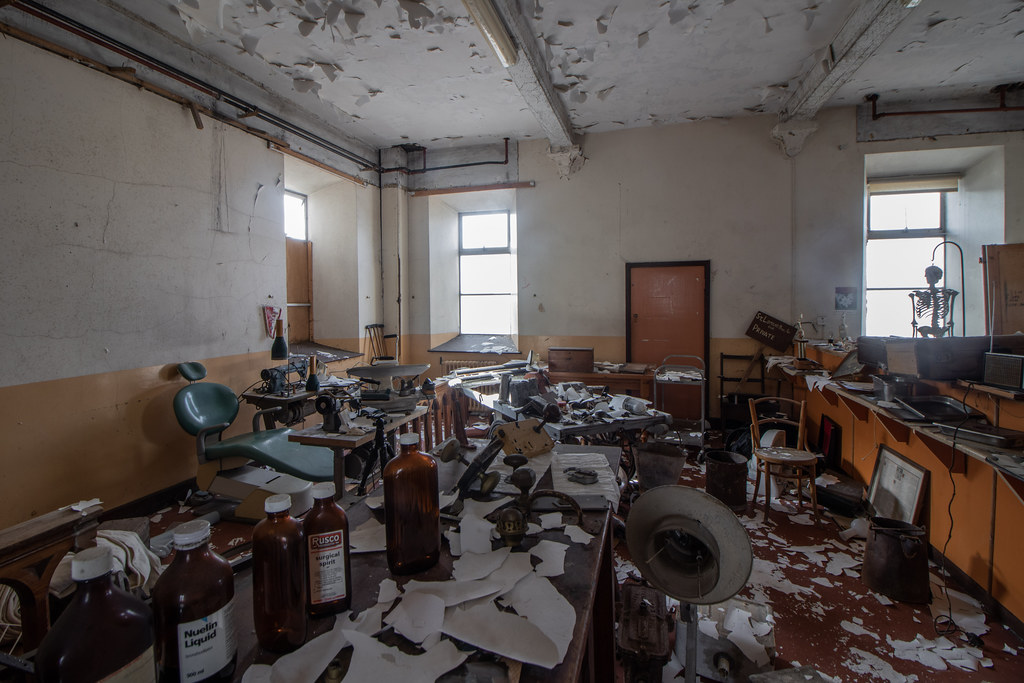
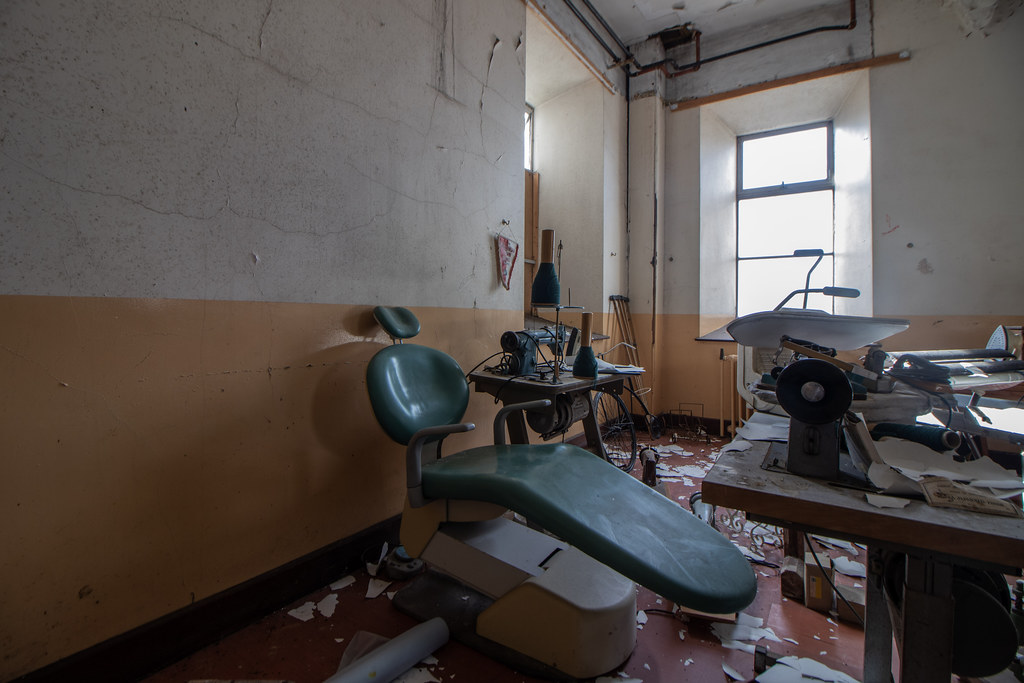
Dentist's chair.
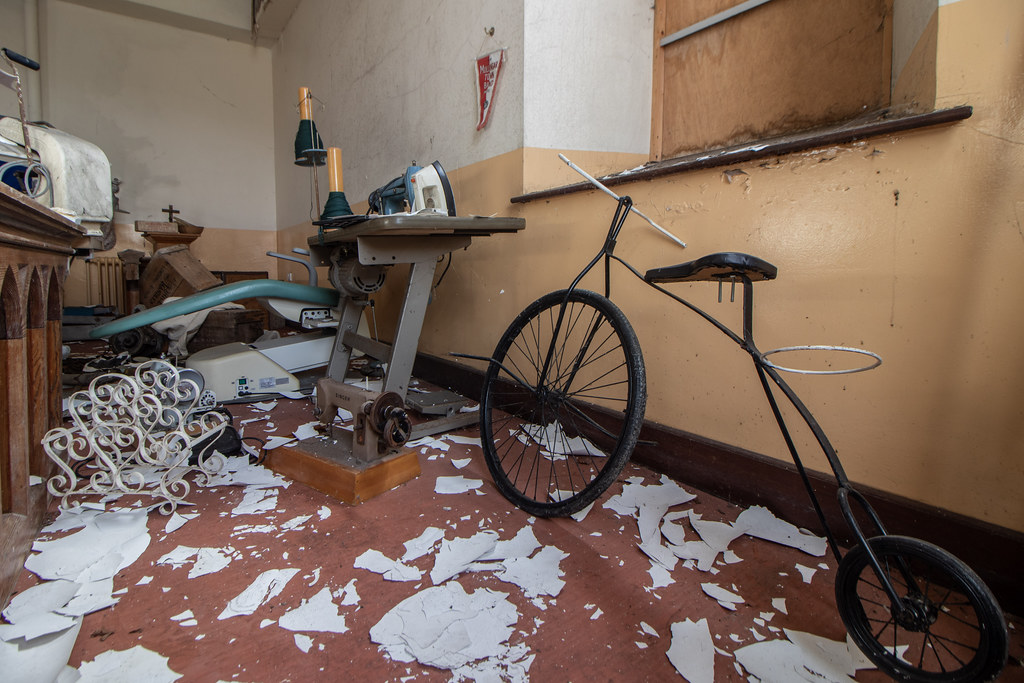
A small Penny Farthing.
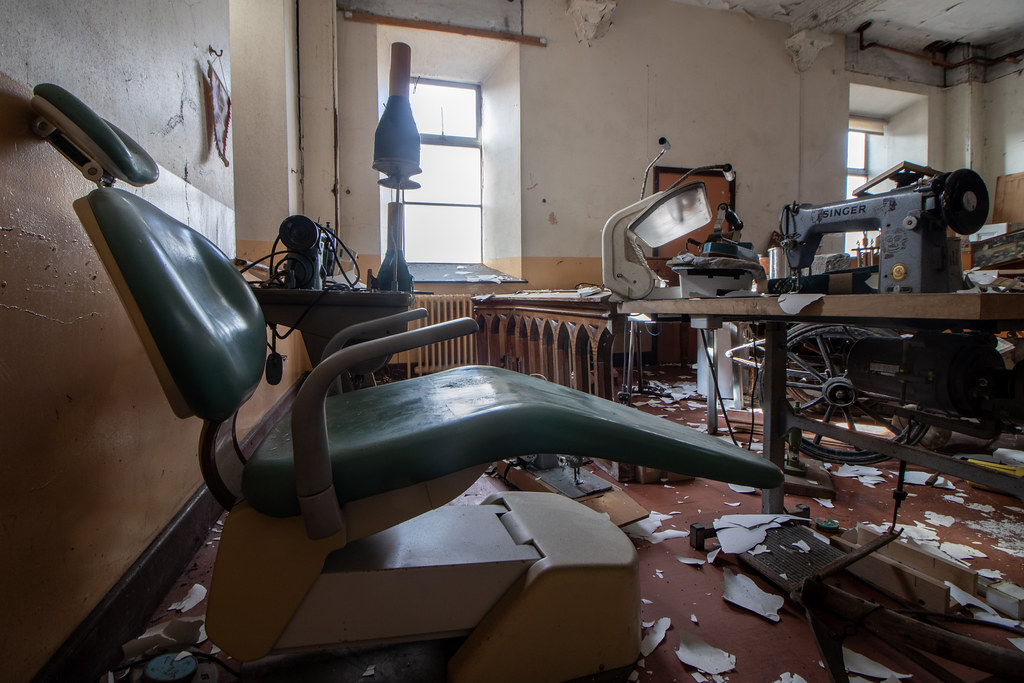
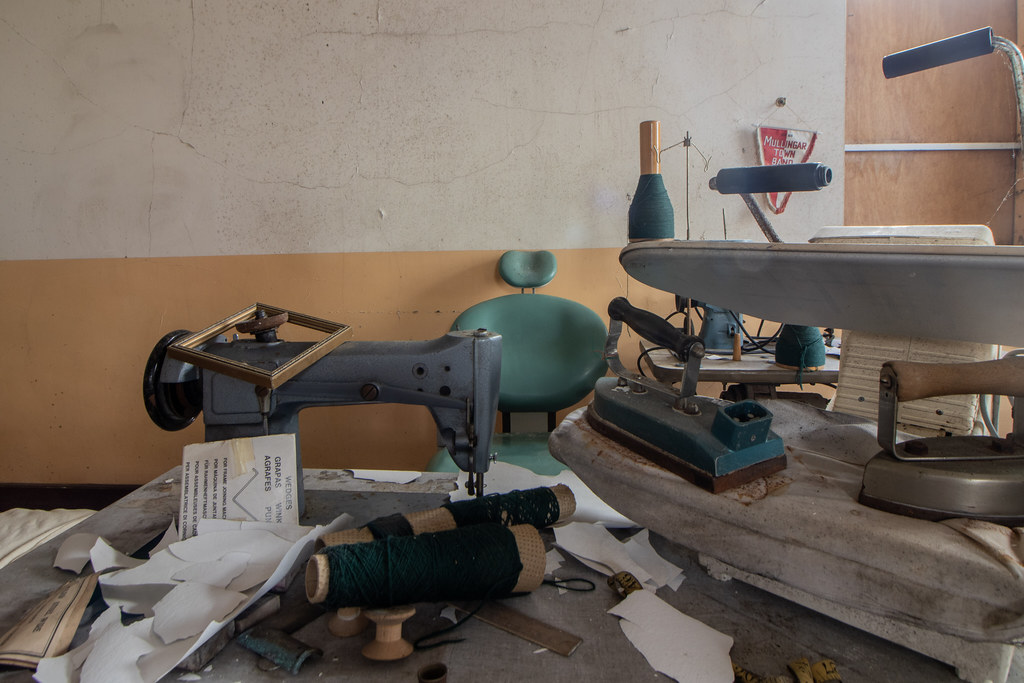
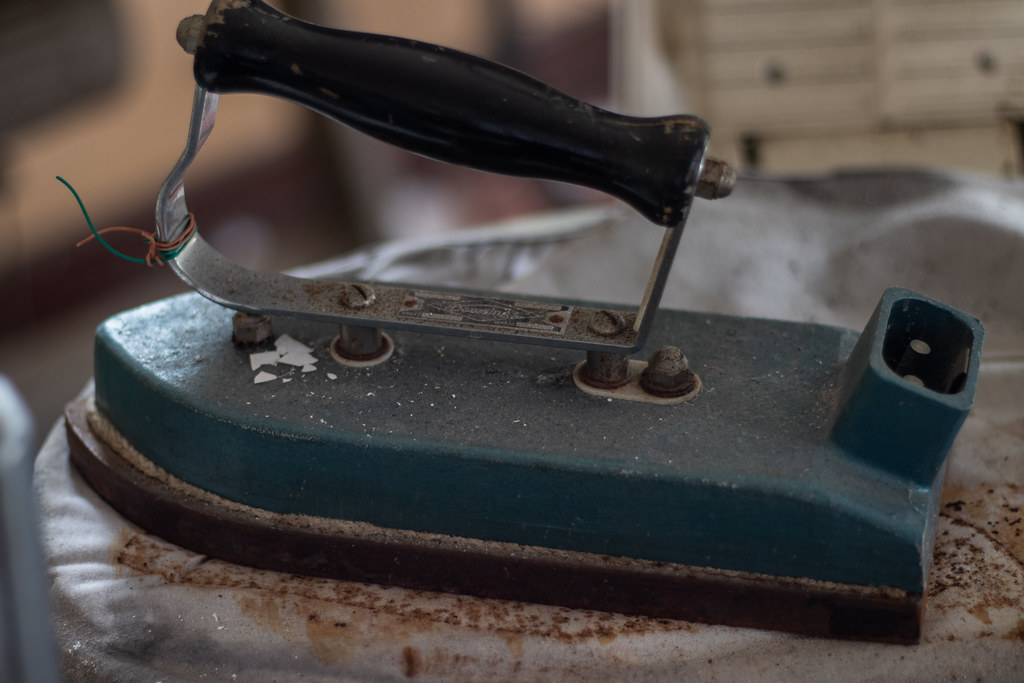
Old iron.
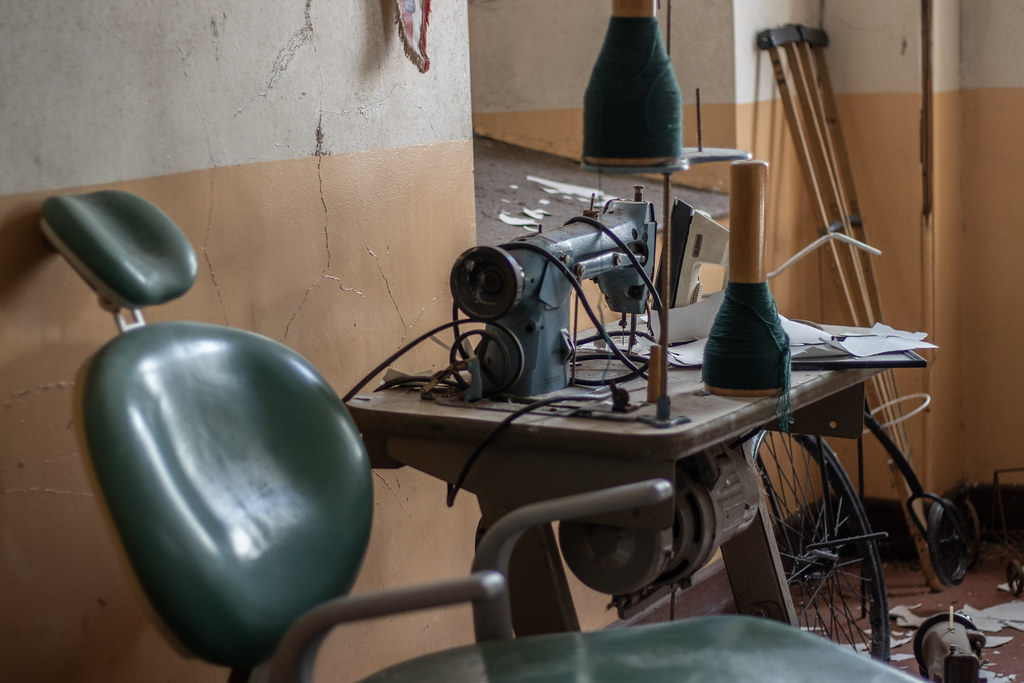
Sewing machine.
To be continued.

The main block of St Loman’s is a freestanding 41 bay, 3 storeyed hospital built on twenty-five acres of land purchased in 1848 for which eventually opened as the Mullingar District Lunatic Asylum in August 1855. It was extended 40 years later. The hospital is a well-detailed Victorian institutional complex, in the Gothic style with extensive Tudor Gothic detailing. The structure was built to designs by John Skipton Mulvany, possibly the most celebrated architect operating in Ireland at the time. It cost £35,430 to build, equivalent to €3.2 million in today and was built to accommodate 300 patients. The first patients were transferred from the Richmond Surgical Hospital in Dublin, and all of them were female. In the grounds of the hospital, there are various buildings including a chapel which was constructed 1886, a nurses' home and an infirmary which were built 1940. While looking further into the history of the asylum it was apparent that there were plenty of dramatic events that took place over its lifetime. A severe lack of care for the patients was a common occurrence during the time the hospital was open. There are multiple accounts of mistreatment in the early to mid-20th century. The most notable account was of Hanna Greally who was admitted in 1943 by her mother after witnessing the London Blitz. Greally published a book in 1971 called Bird’s Nest Soup which is said to provide a grim picture of life inside one of these institutions in the 40s-50s. On top of the poor care at Loman’s, a reported 1304 bodies are buried in the grounds, with the last body being buried in 1970. Each grave is unmarked, and a cross is stored somewhere in an outbuilding on site with a number attached. Aside to the dark history behind this institute, Loman’s was subject to an ISIS chemical attack hoax where the nurse staff were delivered an envelope containing a white powder and a note with the message “ISIS is going to get you”. This sparked the Gardaí and army to respond and lockdown the hospital and put a cordon in place until the Army Bomb Disposal unit had examined the powder. The closure for this hospital should have been prompt after the Inspector of Mental Health Services produced a report in 2007 with findings of poor conditions such as peeling paint, damp, poor sanitary facilities and many more. The report ended with the statement: “every effort must be made to close the hospital immediately”. The main building shut years later in 2013. However there are 2 newer active wards within the grounds and sections that are still live connecting to the main derelict block. Thanks Theo.

One of the better chance decisions we've made as a group. The unexpected and spontaneous ventures are always the most rewarding, with this huge, district lunatic asylum in Ireland being proof of that. We had other plans in the region, but when they didn't come to fruition and I needed to recharge my gear at a Tesco, we figured we might as well look at the nearby lead of mine featuring a huge asylum with sections apparently closed. There wasn't really much else to it than a slight aspect of overgrowth on the land around the back that had led me to pin it, as well as the factor that most Irish asylums contain disused parts.
Arriving at the site, we initially thought we would be looking at a miniscule segment of the colossal structure from it's imposing, tidy front. However, moving around the back to where it seemed a lot more active, it was clear that much more of the building was out of use than we had thought. Our opening attempts of entry were very simple and nonchalant, but gazing through the windows at classic asylum details, we then began to try more unusual methods. A worker halted us only to discover what we were doing and express his approval, which also provoked us to really work to getting in, because it felt like the opportunity was too golden. Eventually, after testing one of the dirtiest squeezes I had ever done, even requiring a clothes swap with Theo, I ended up inside a bathroom, only to find that all the doors were locked. Extreme sadness... as it was an attempt where I was convinced if I got through, I wouldn't be leaving the same way. Getting back out was immensely difficult and needed a guide on the opposing side of the wall, but eventually it was deemed possible. Thankfully, the next window along worked fine and I was in.
Having left my equipment in Tesco, the others scooted off to collect it. They went on the way accompanied with a video from me, 'Hi, I'm currently stuck, but these here are my friends and I give permission for them to get my stuff. Thanks,' something like that. Meanwhile, myself and Oli found a door to open and started to meander around the site, uncovering more stunning asylum iconography as we did so. We couldn't believe the state of the asylum, with minimal decay and practically everything left behind. It was truly fascinating walking through, unknowing what exceptional gems would be in each room, such as a perfectly intact dentist chair in an upstairs canteen. The others soon returned and we spent a solid five hours within the complex.
Starting on the ground floor of three. There is a basement there, but unfortunately, we ran out of time pressured by a security guard. Some real interest could be stashed down there.

The far west side of the main block's corridor was blatantly abandoned, with some beautifully coloured corridors.



Common room. The fire alarm was going off here.


The first of many hydrotherapy baths.


On the way to the kitchens, which directly connects to active areas. We didn't stay here for too long, but had a lovely conversation with a worker through a window.



Main hall/canteen. Probably modernised in the last 30 years or so, but still boasted some ornate features. The women we spoke to informed us that the beds were to be sent back to hospitals around the country after the pandemic. It reminded me of that one in Kent.


Main entrance.


Some form of classroom.
On the second floor, it started to appear like it had been disused for a lot longer. There weren't any signs that the occasional worker may enter these sections. The corridors were conventionally hospital coloured, with outdated equipment left behind and there was a lot more natural deterioration.



Beds.

In between different corridors, these open areas were always prominent, with a nice fireplace and a bay window.
From here, we found what we'd consider the jackpot. It seemed that anything rare had been stashed in what was actually a small canteen. The room had a bit of everything, forcing us to spend a long, long time in here, looking through books, old medicine bottles and archive photographs, whilst also appreciating the many dated artefacts gathering dust.


Dentist's chair.

A small Penny Farthing.



Old iron.

Sewing machine.
To be continued.




